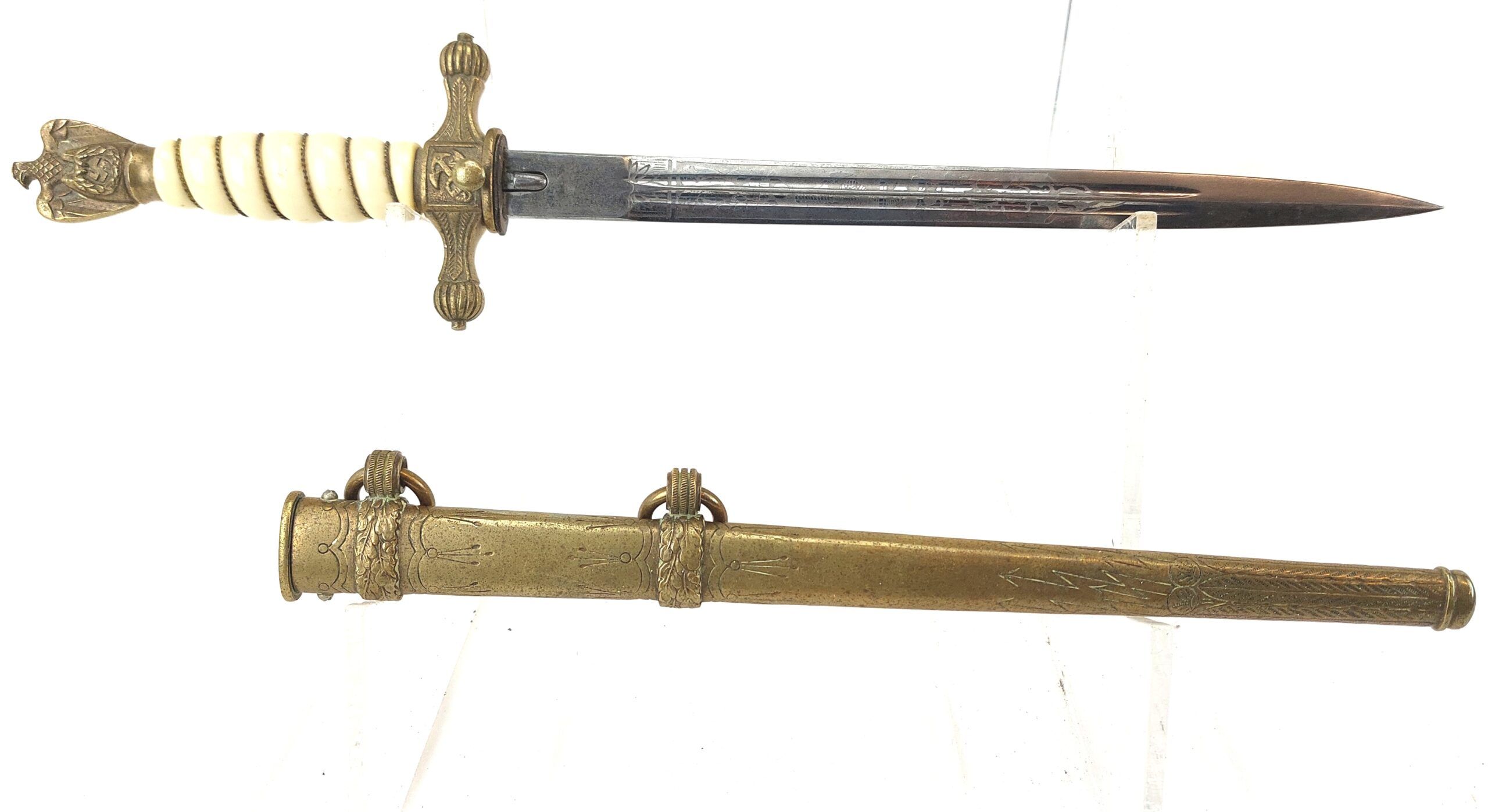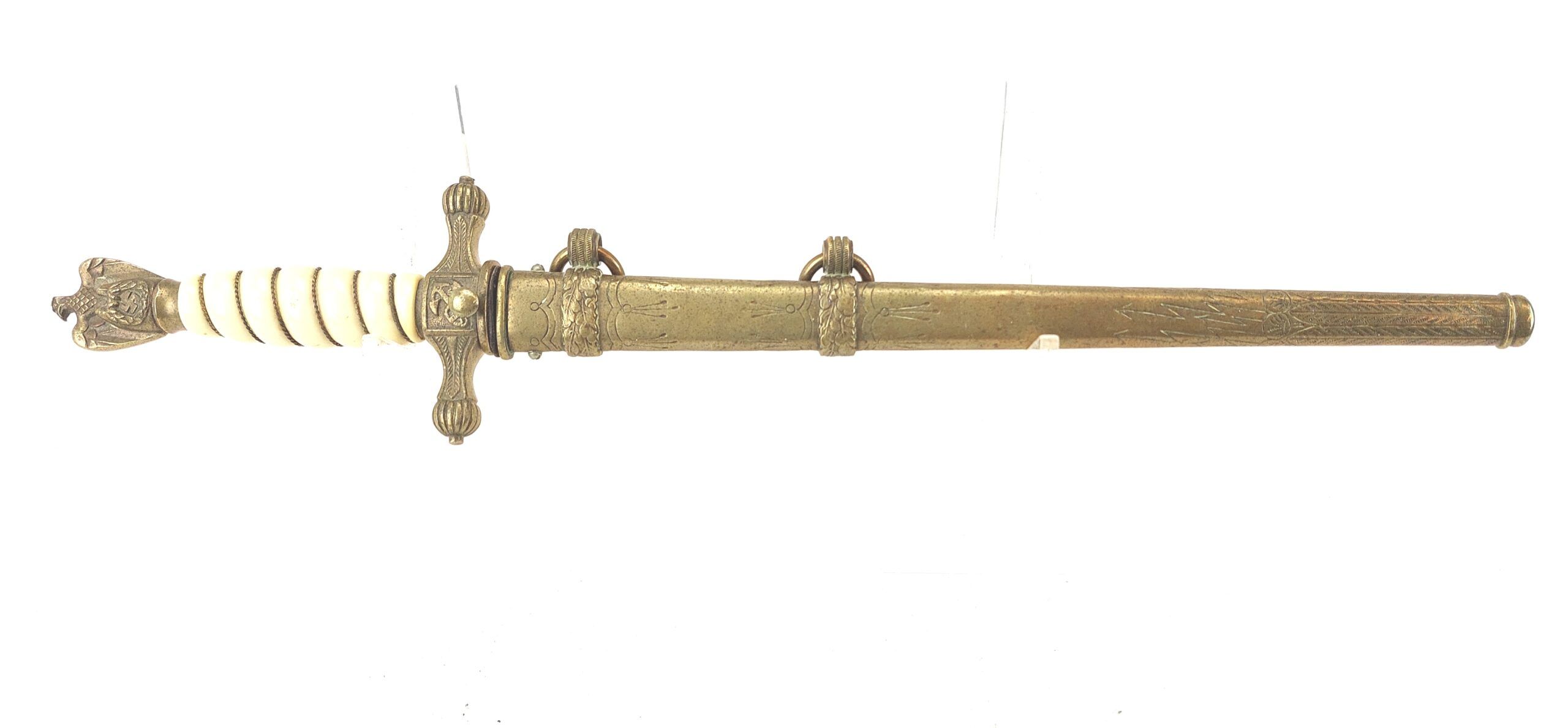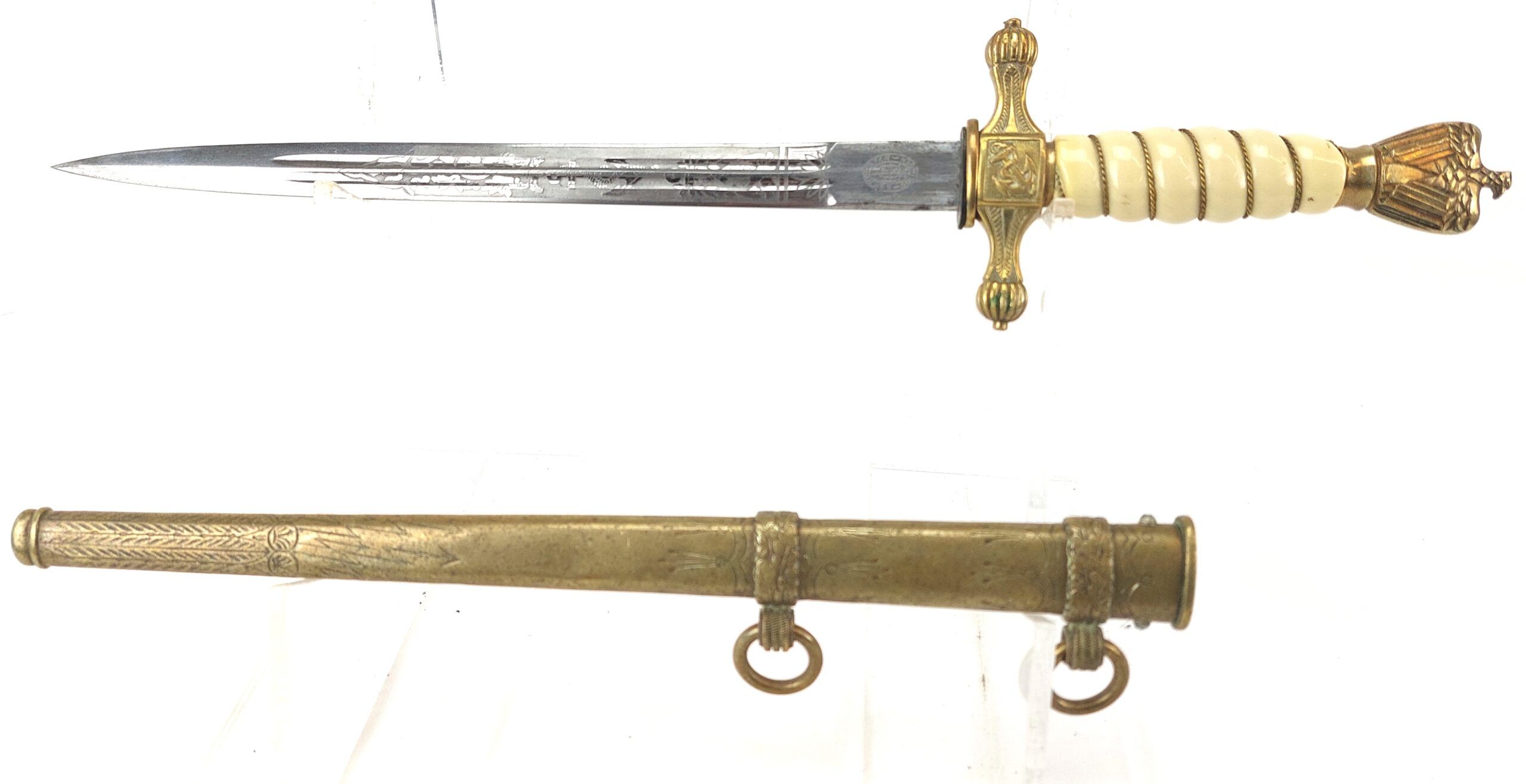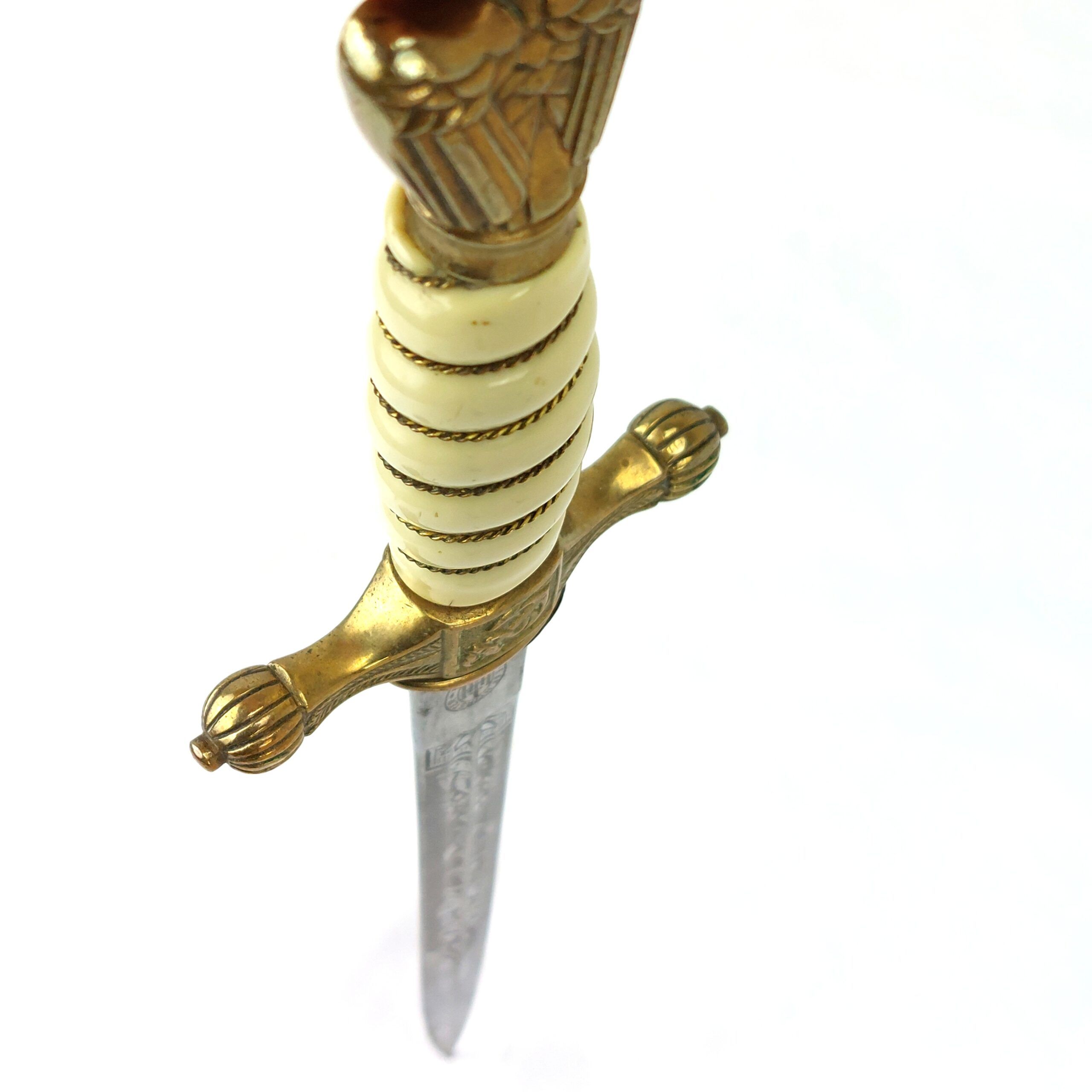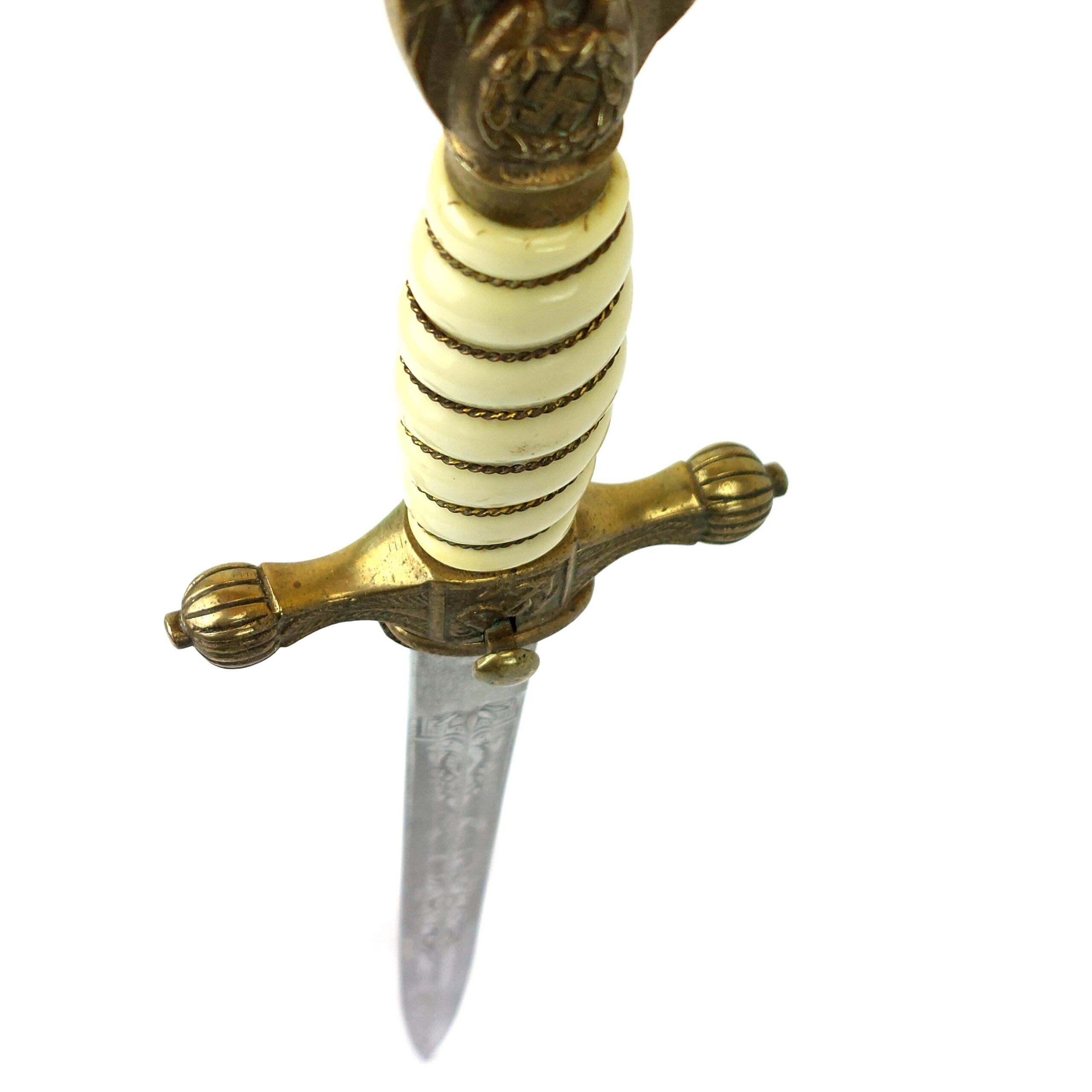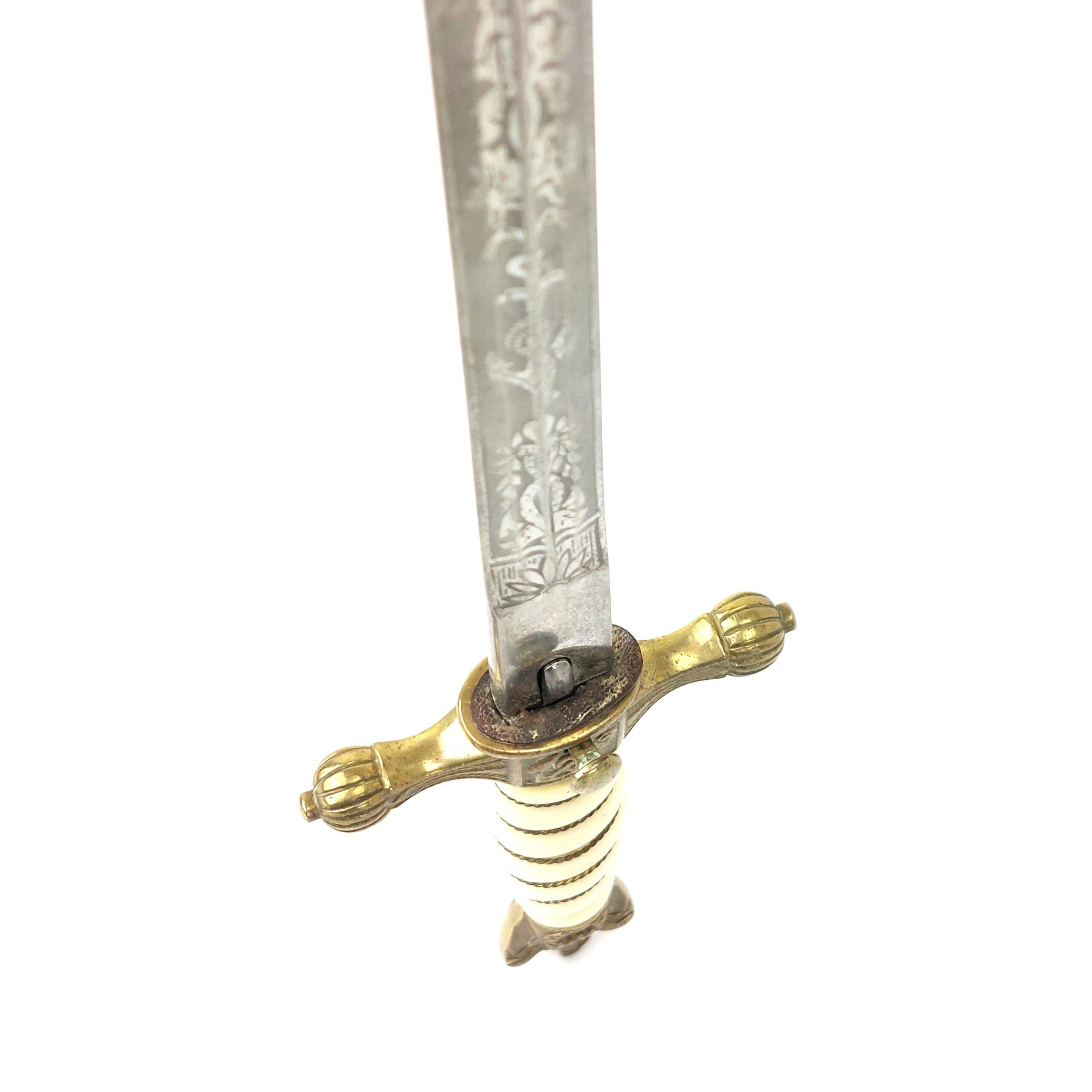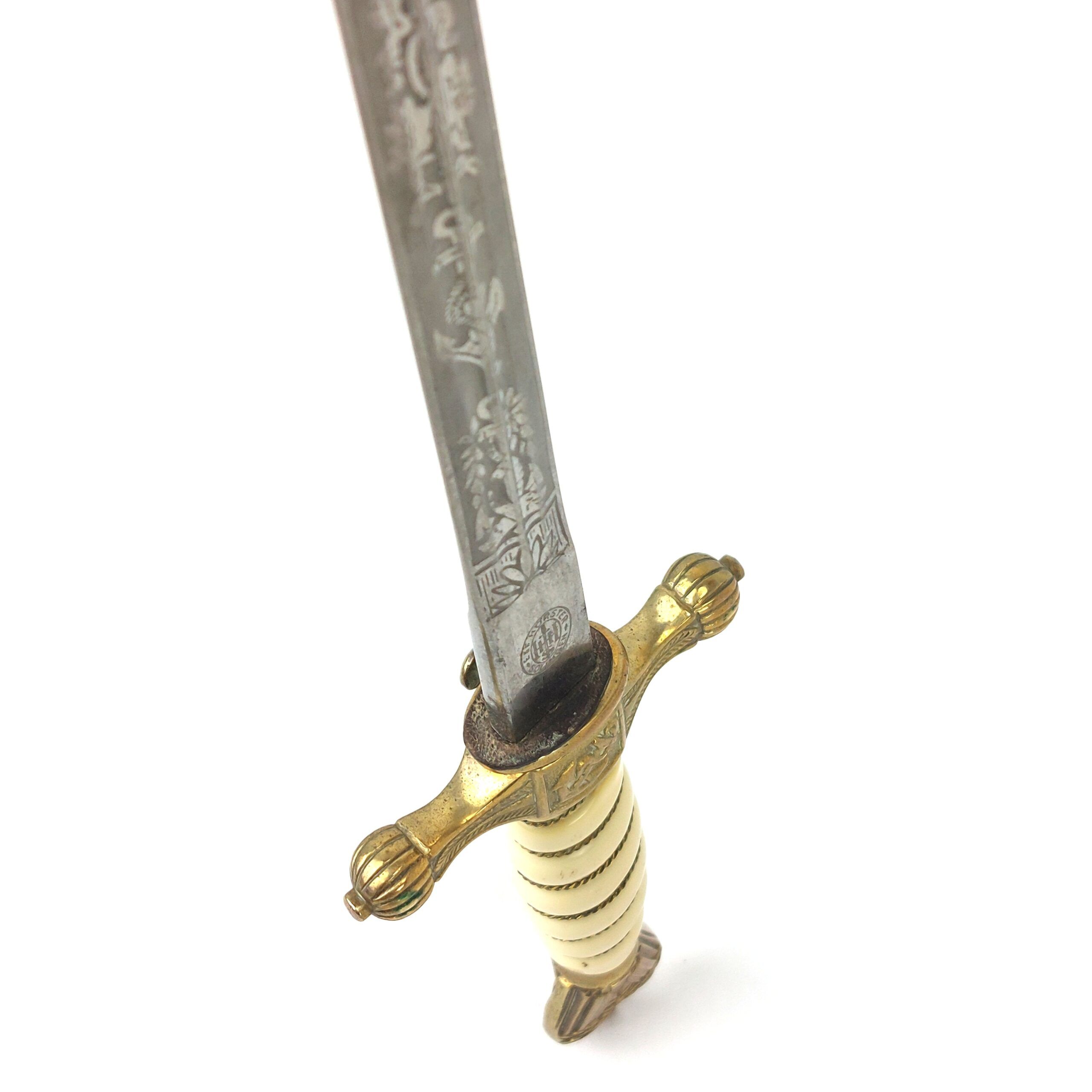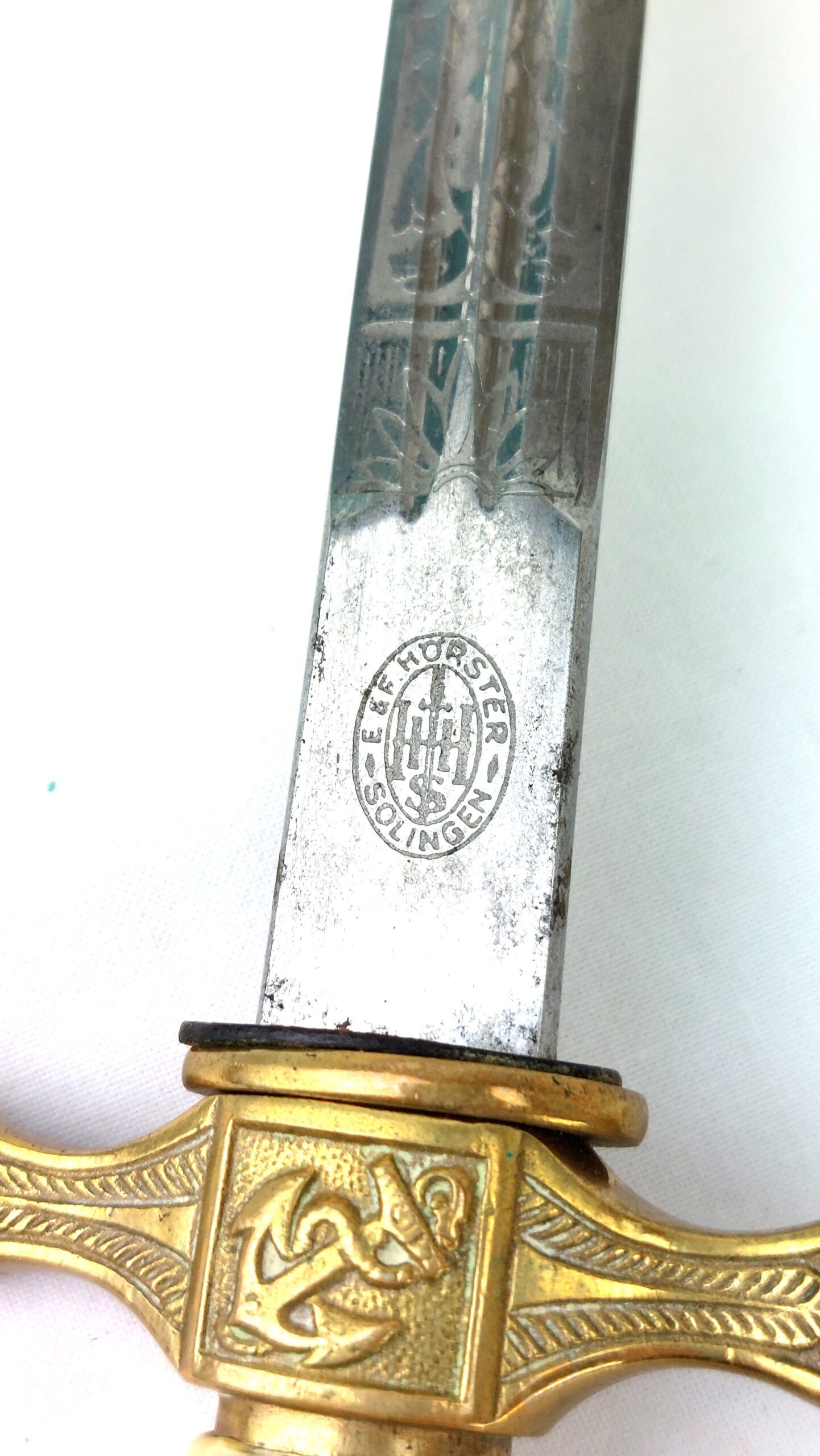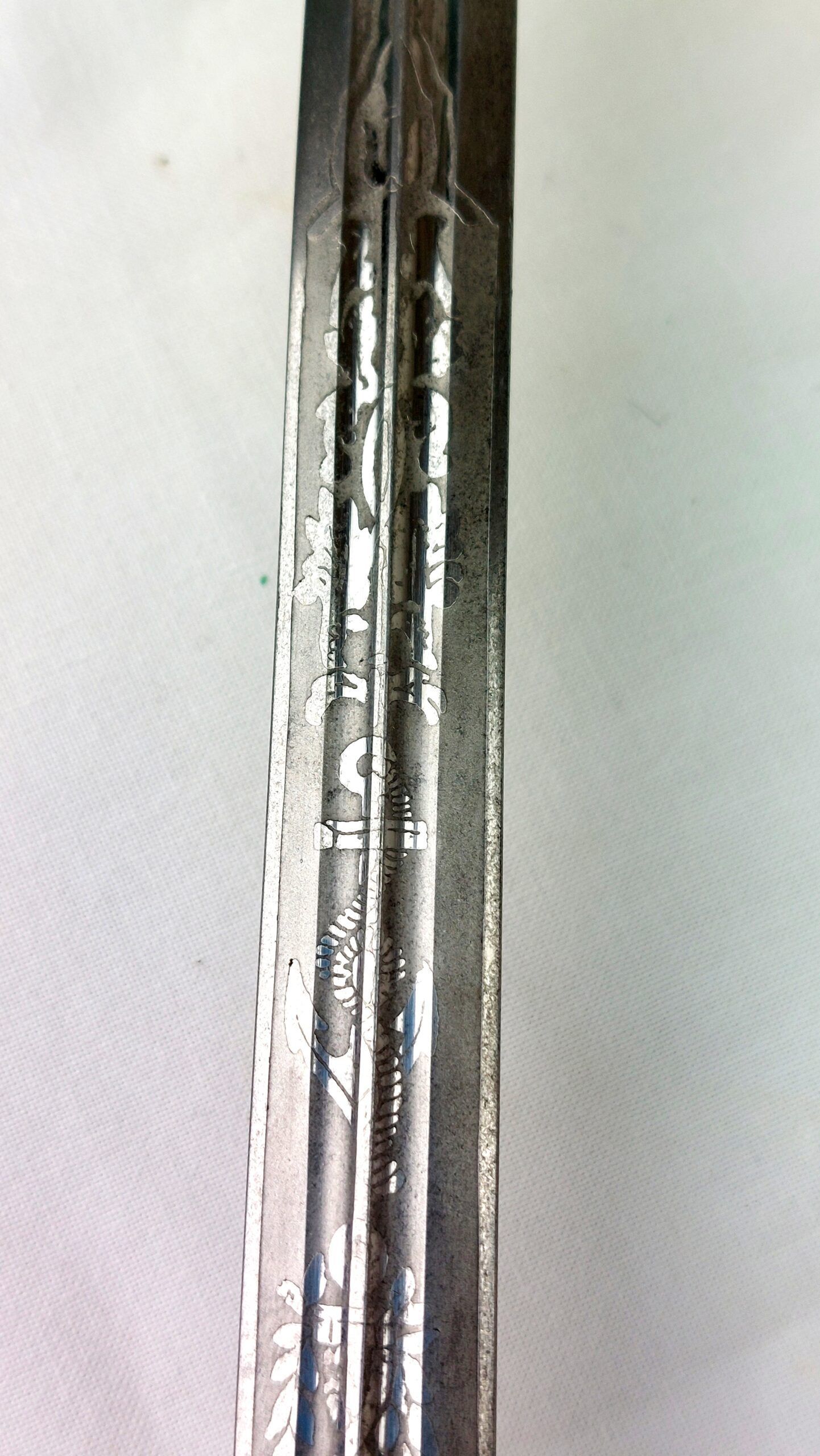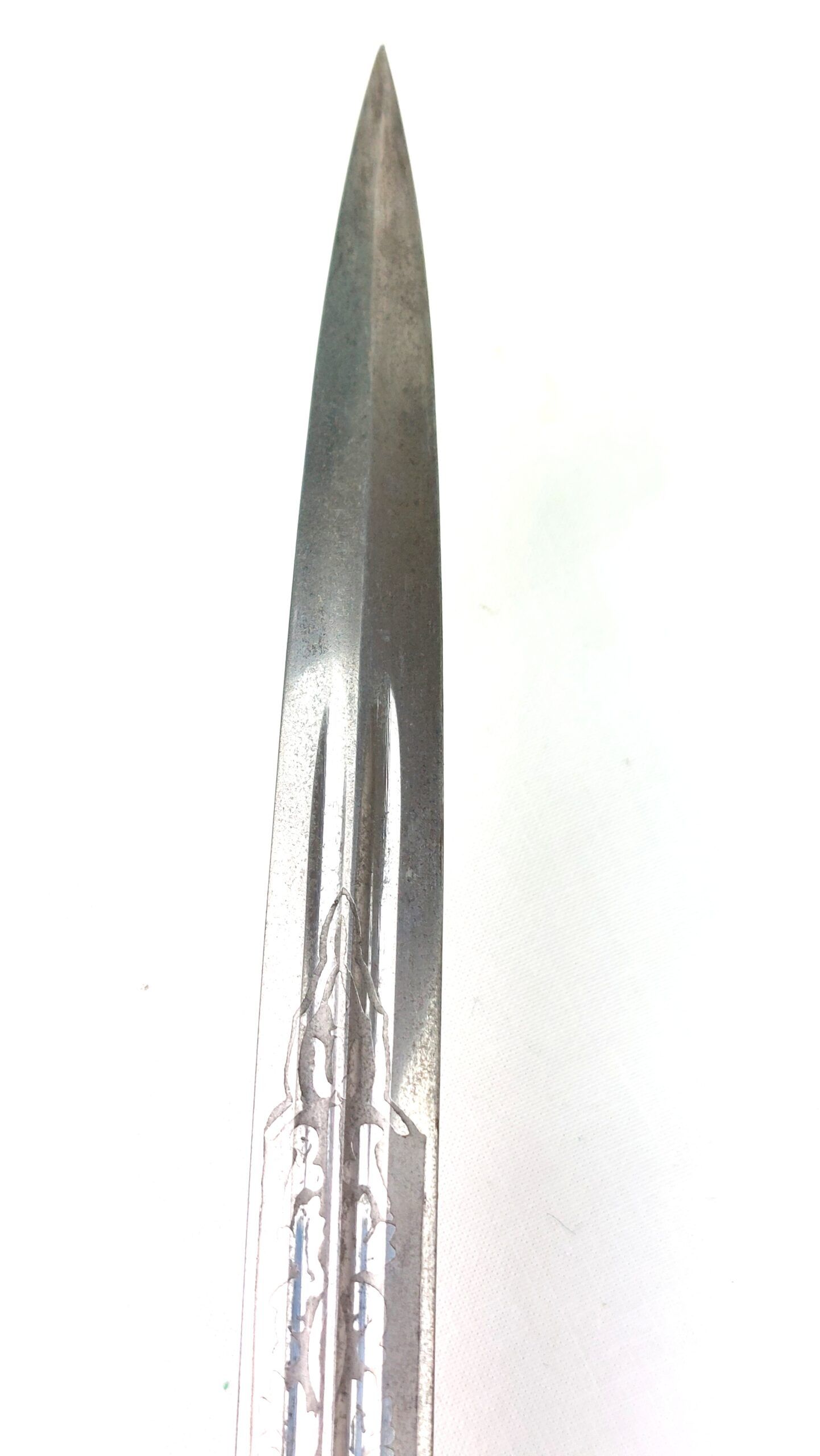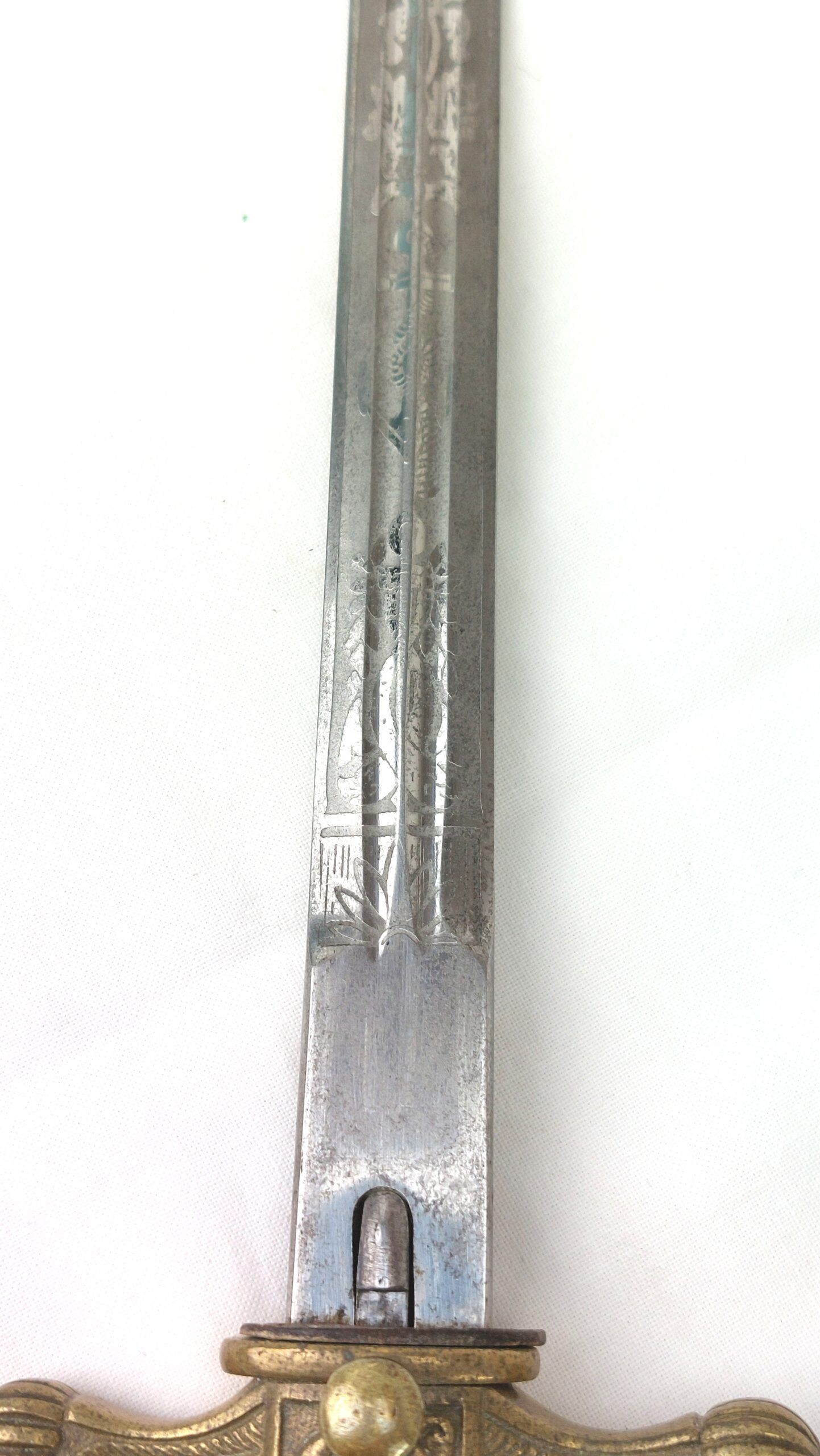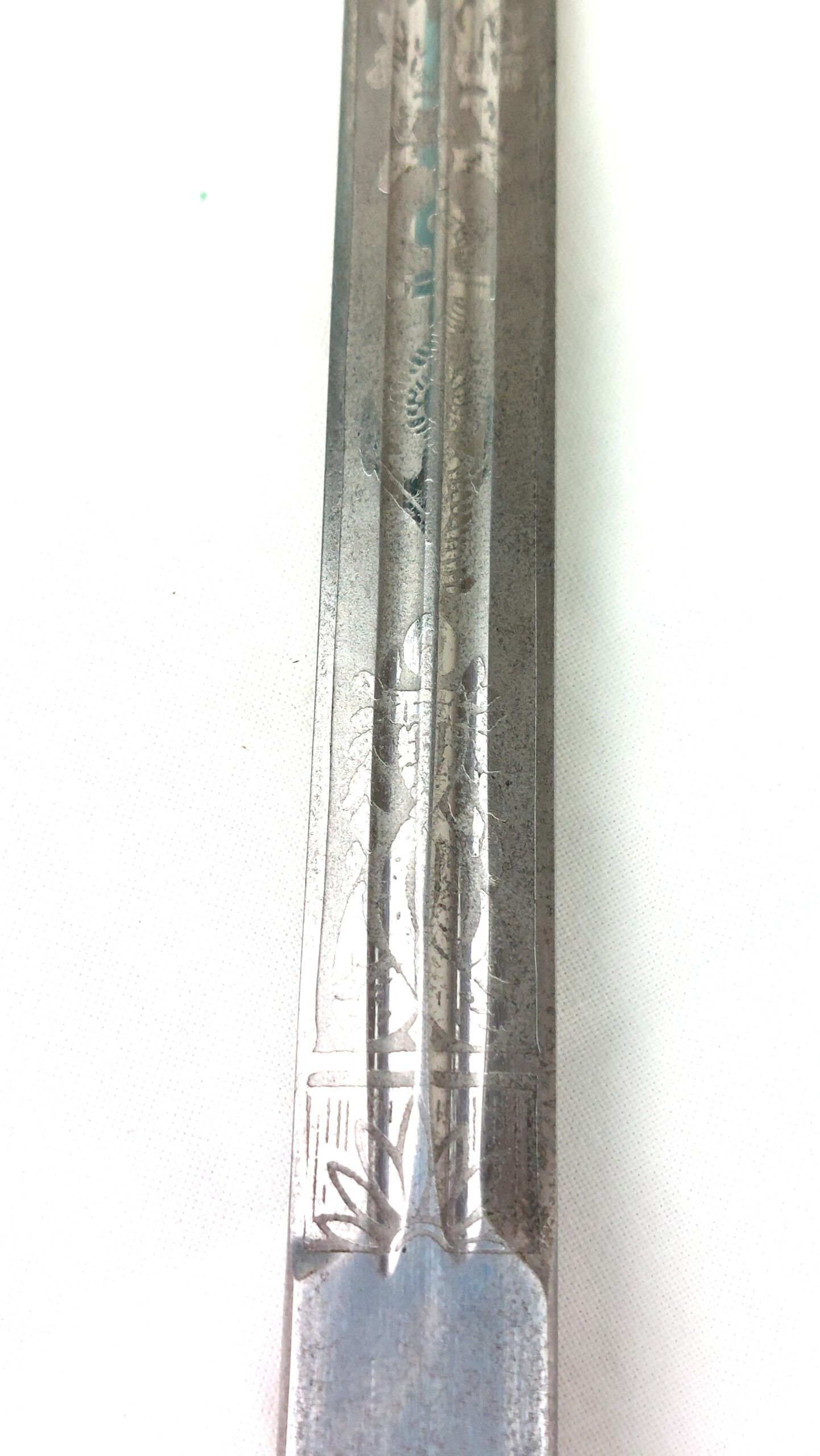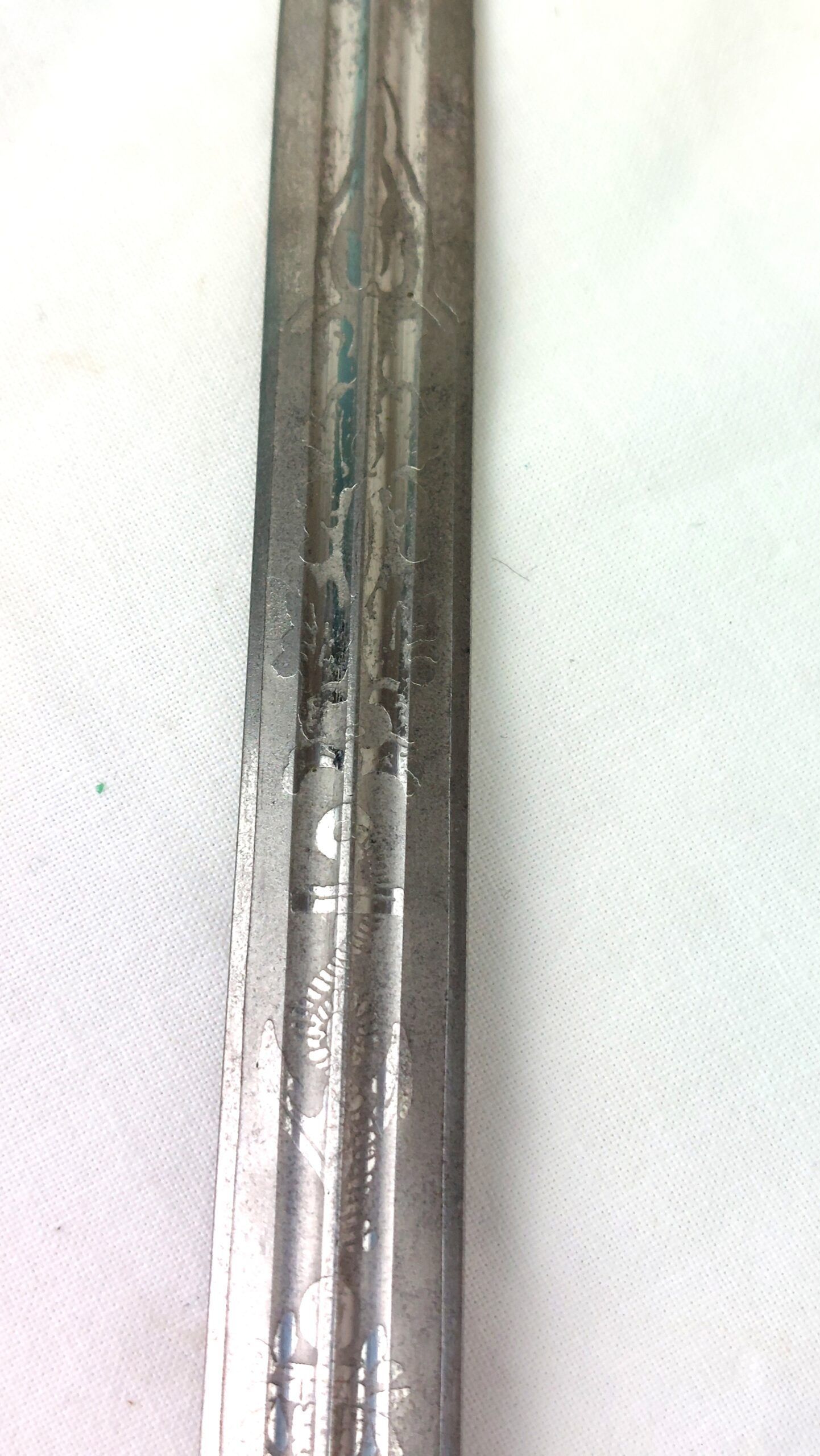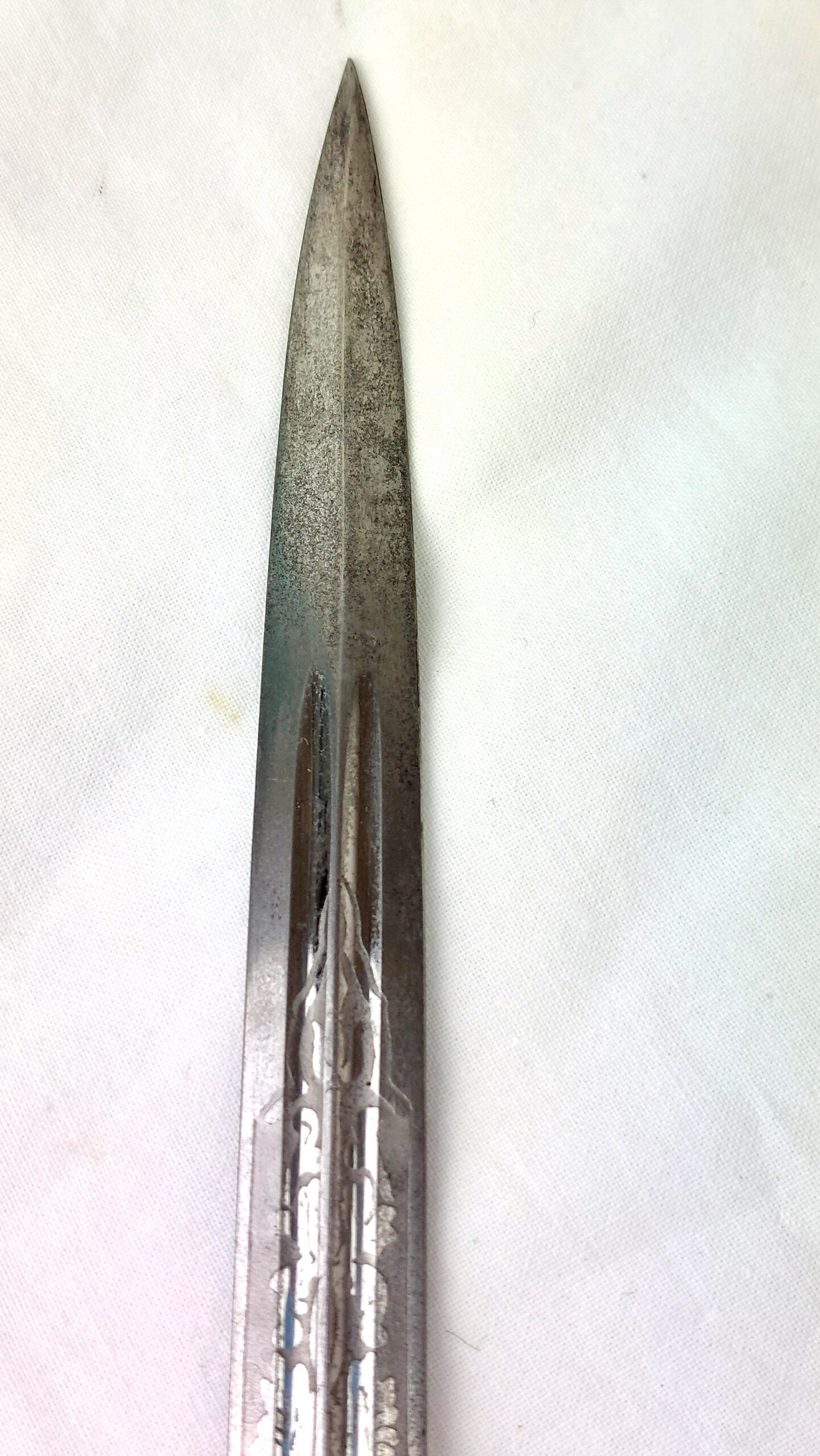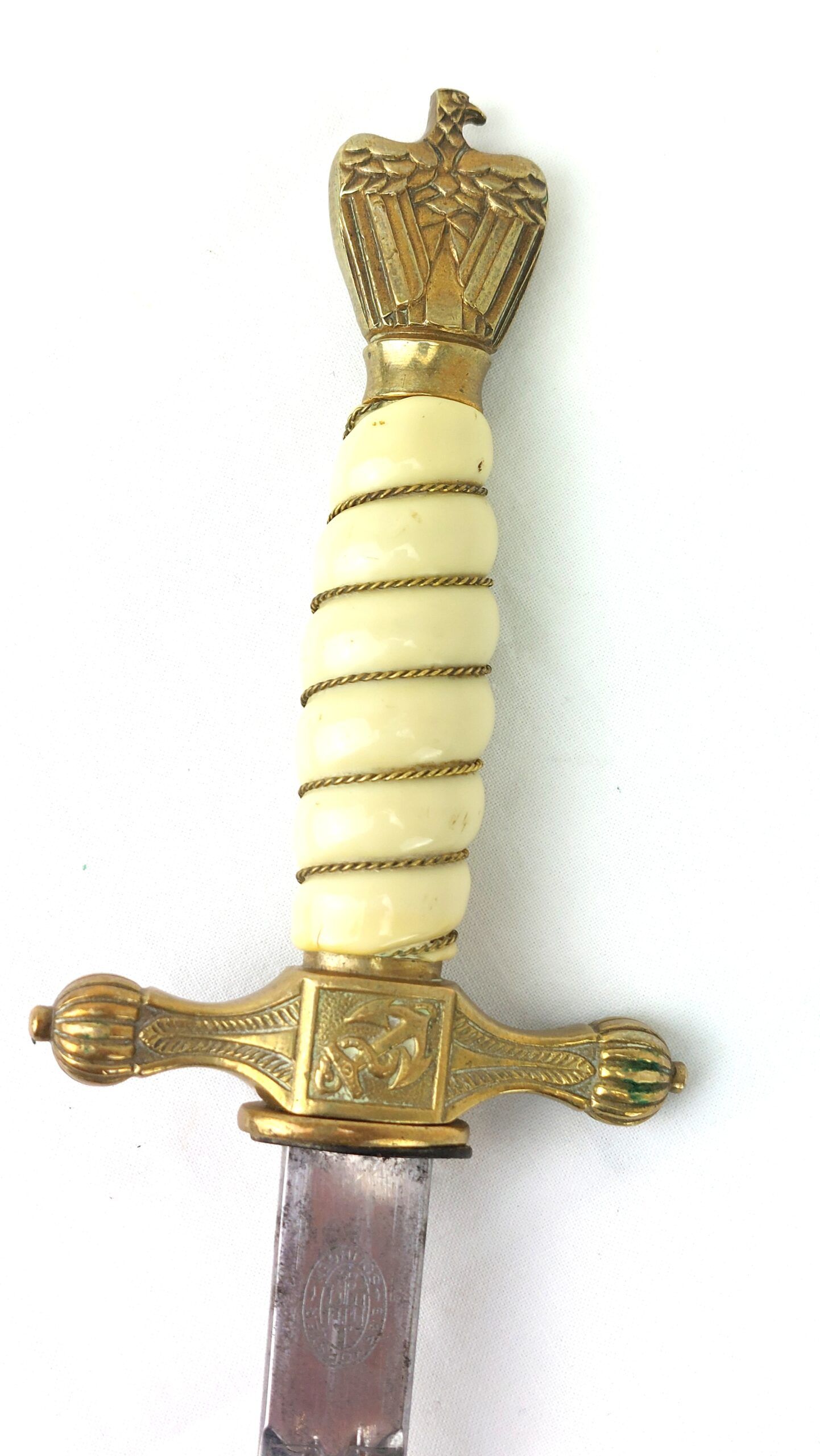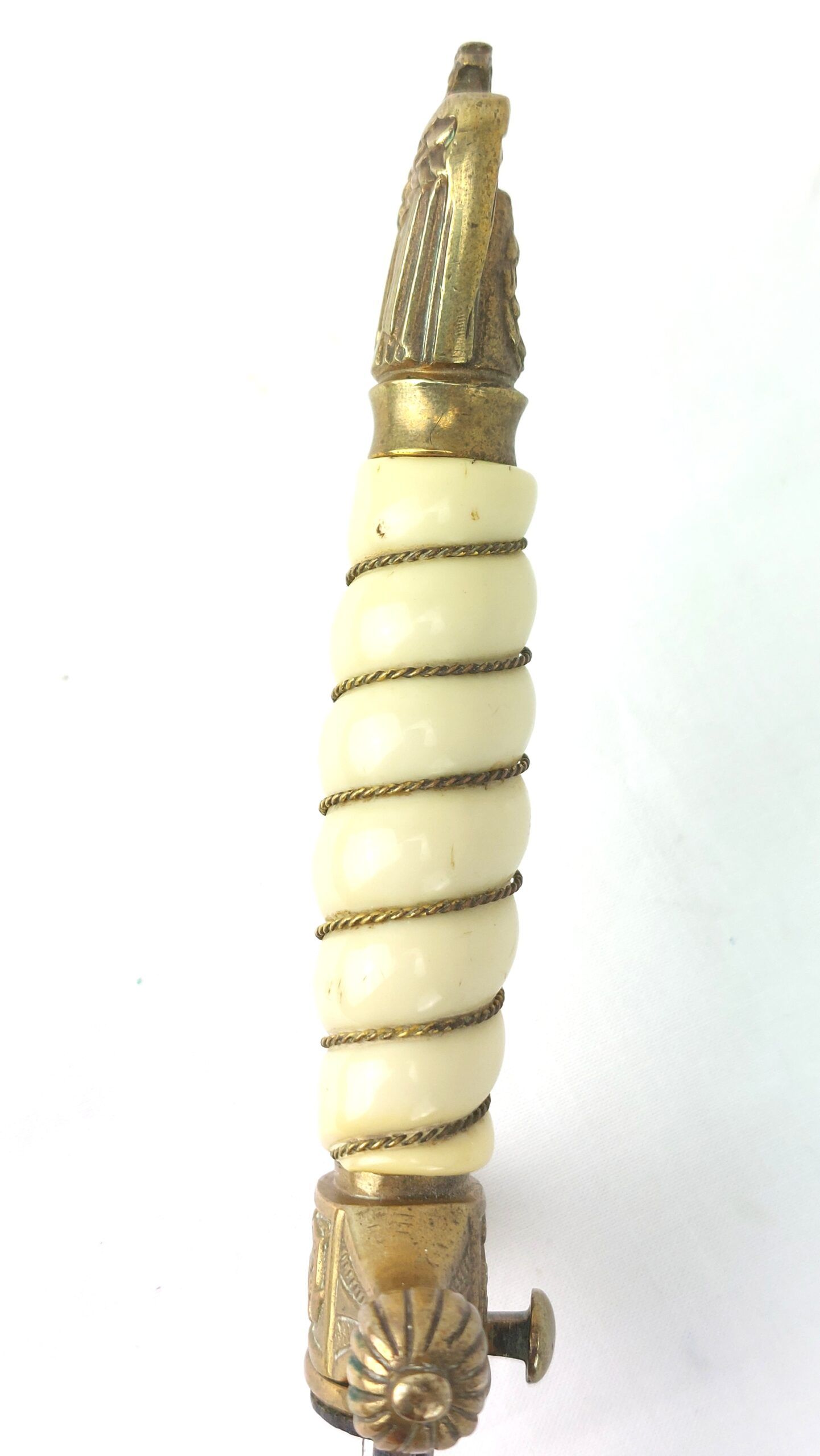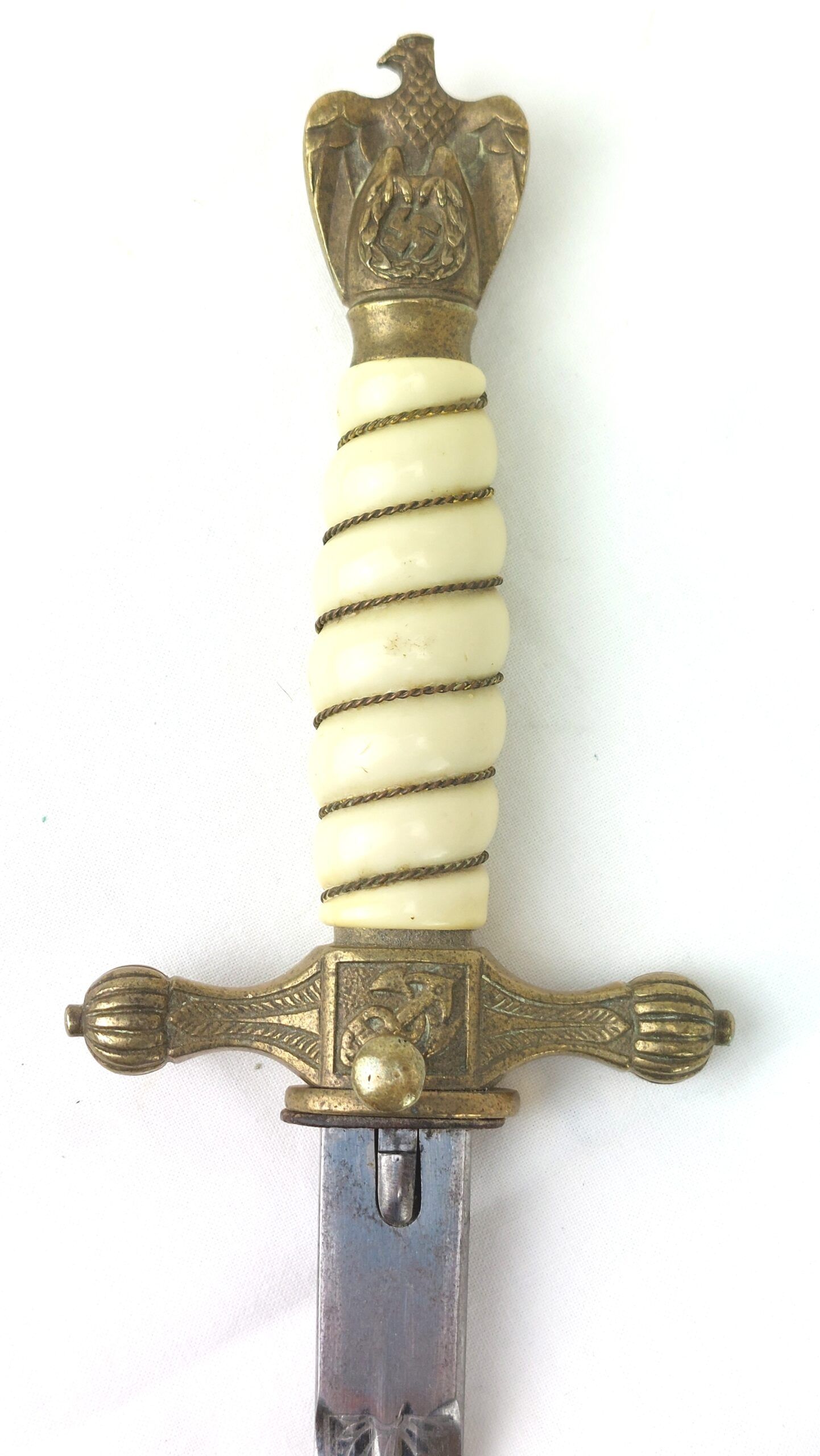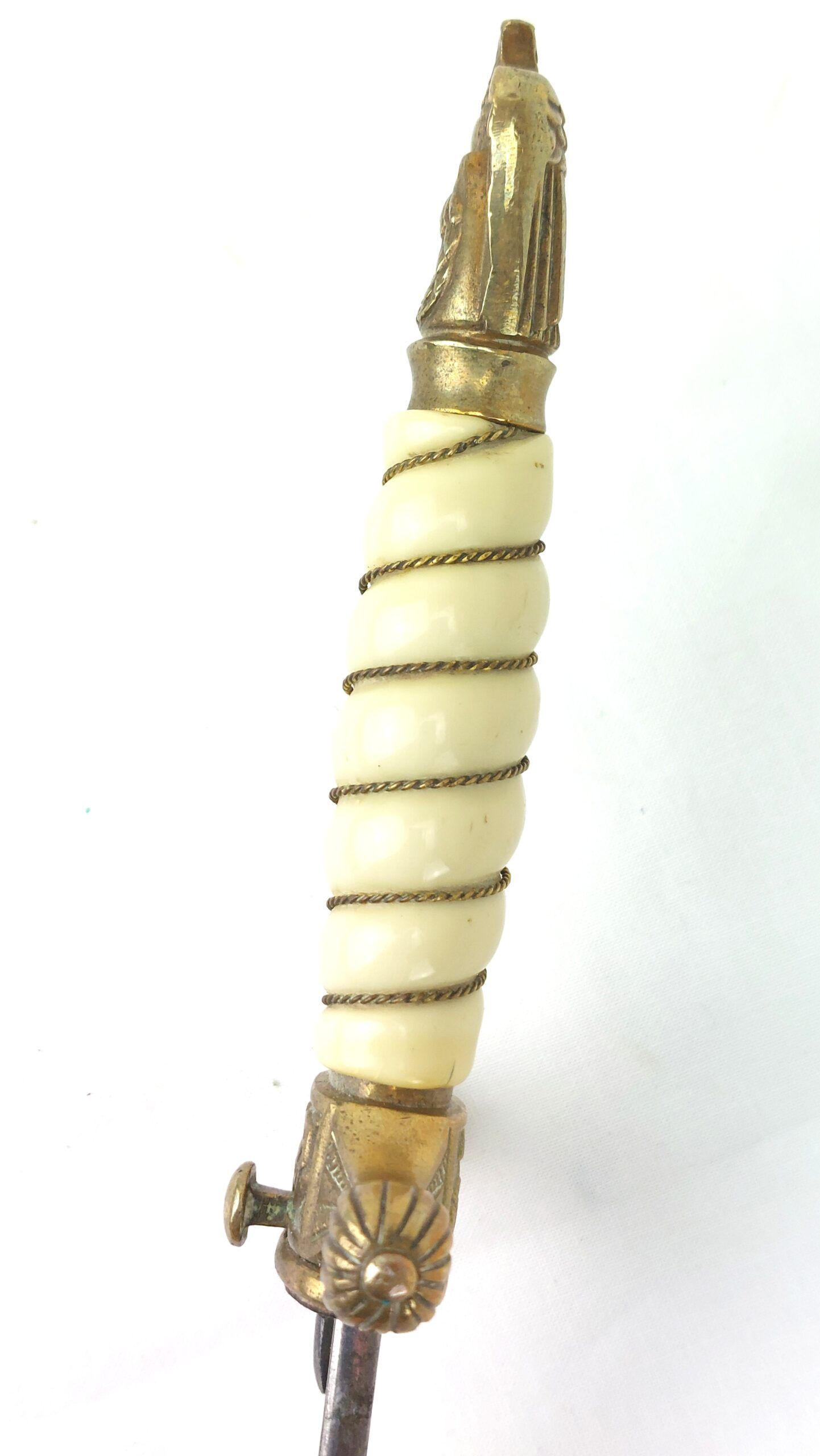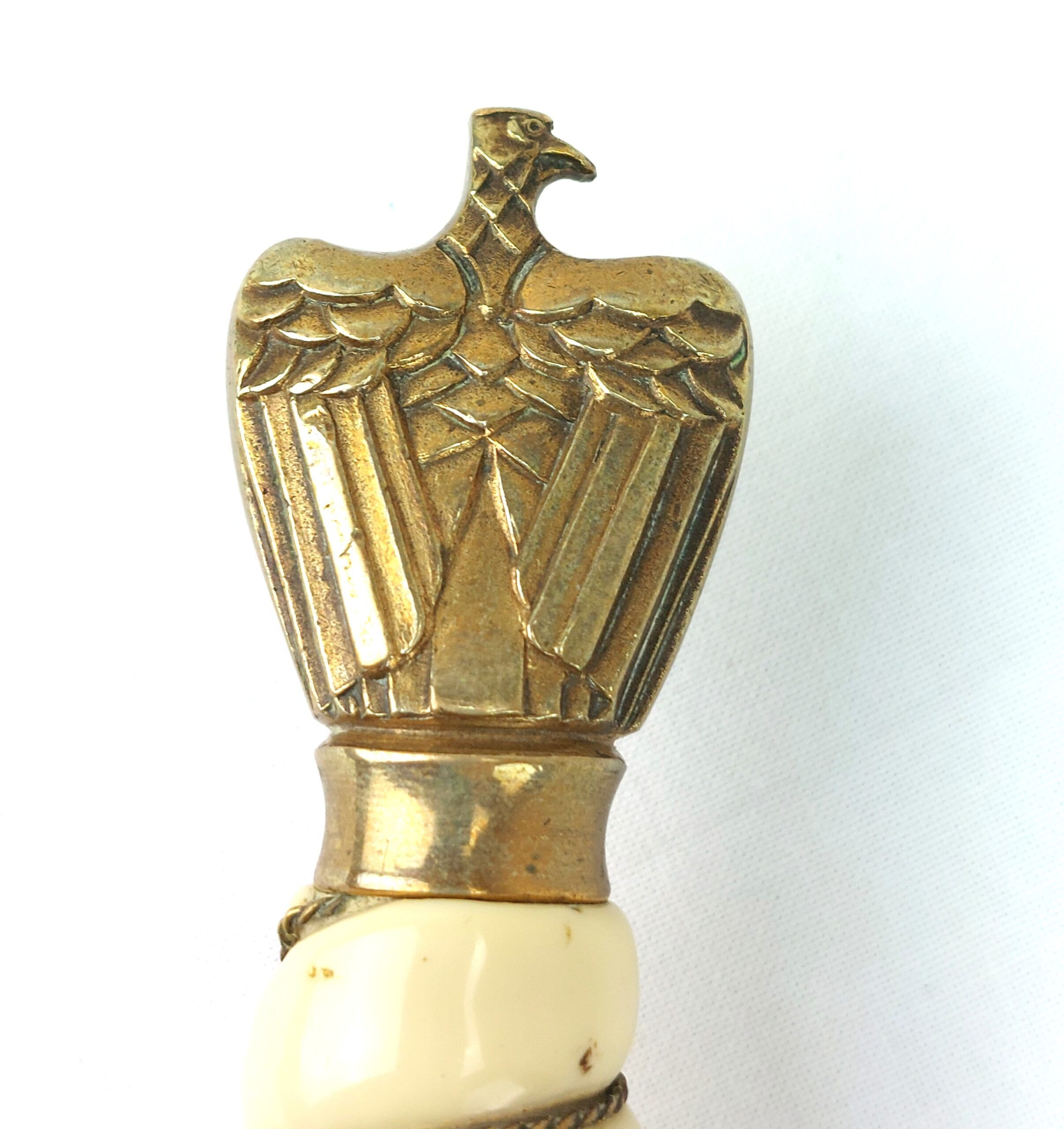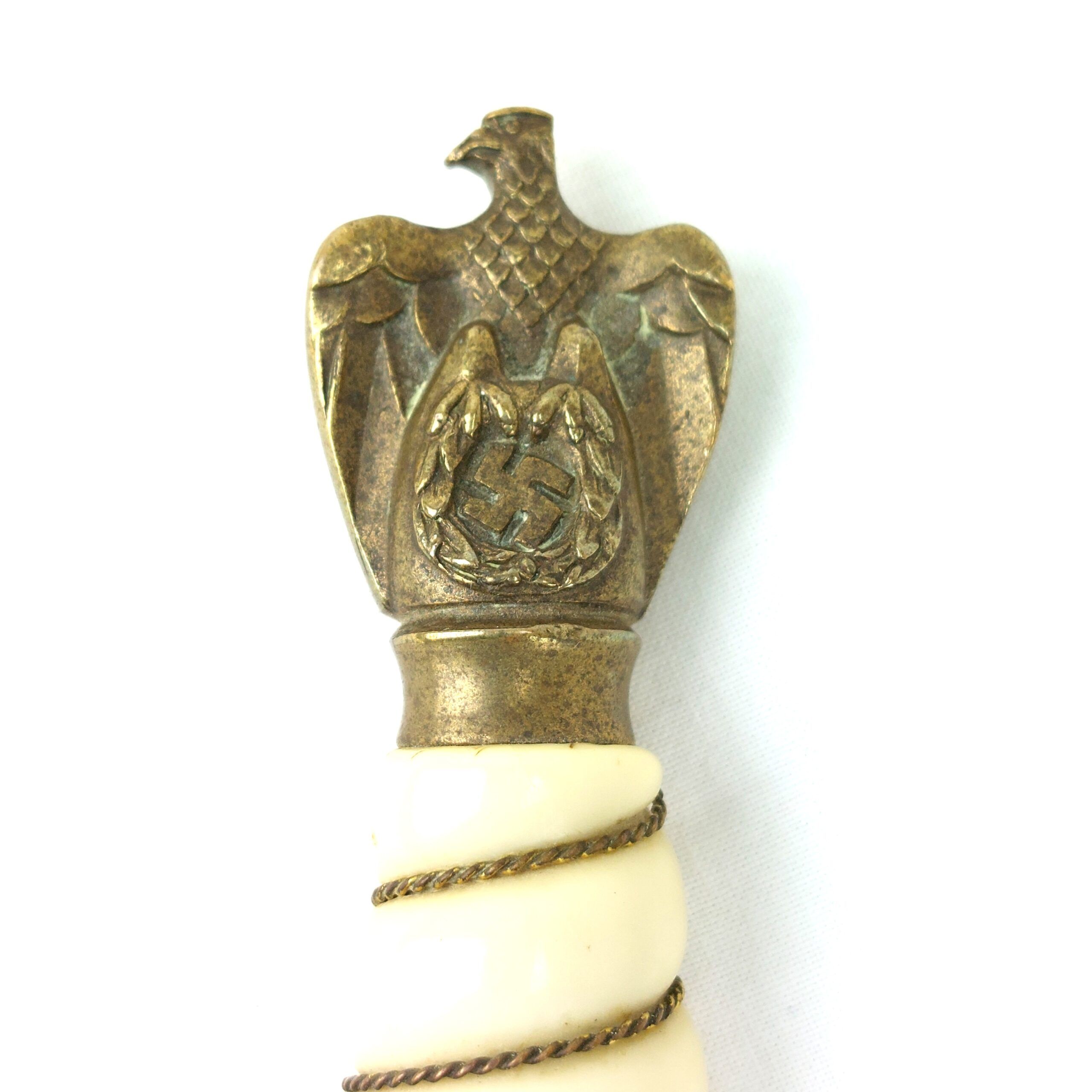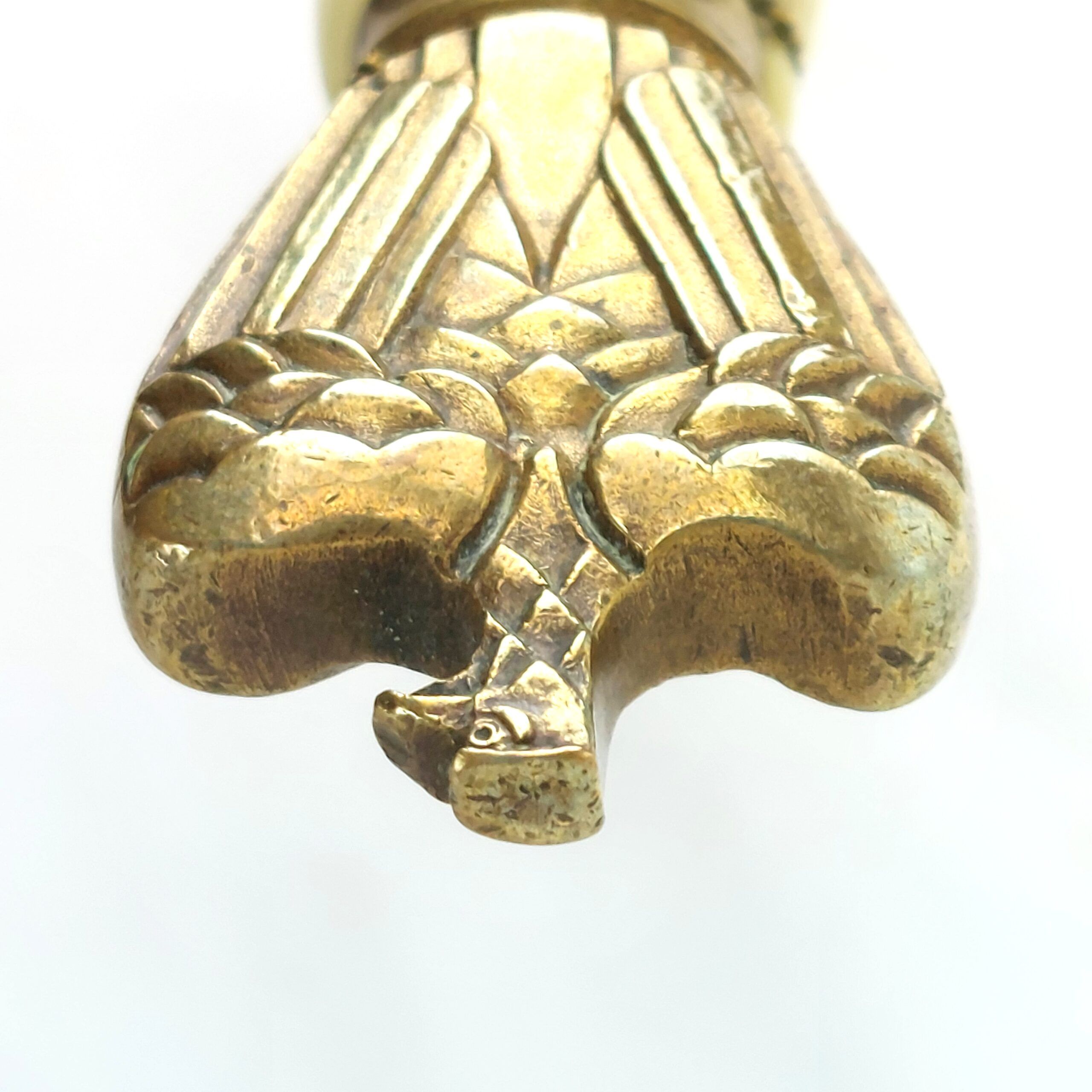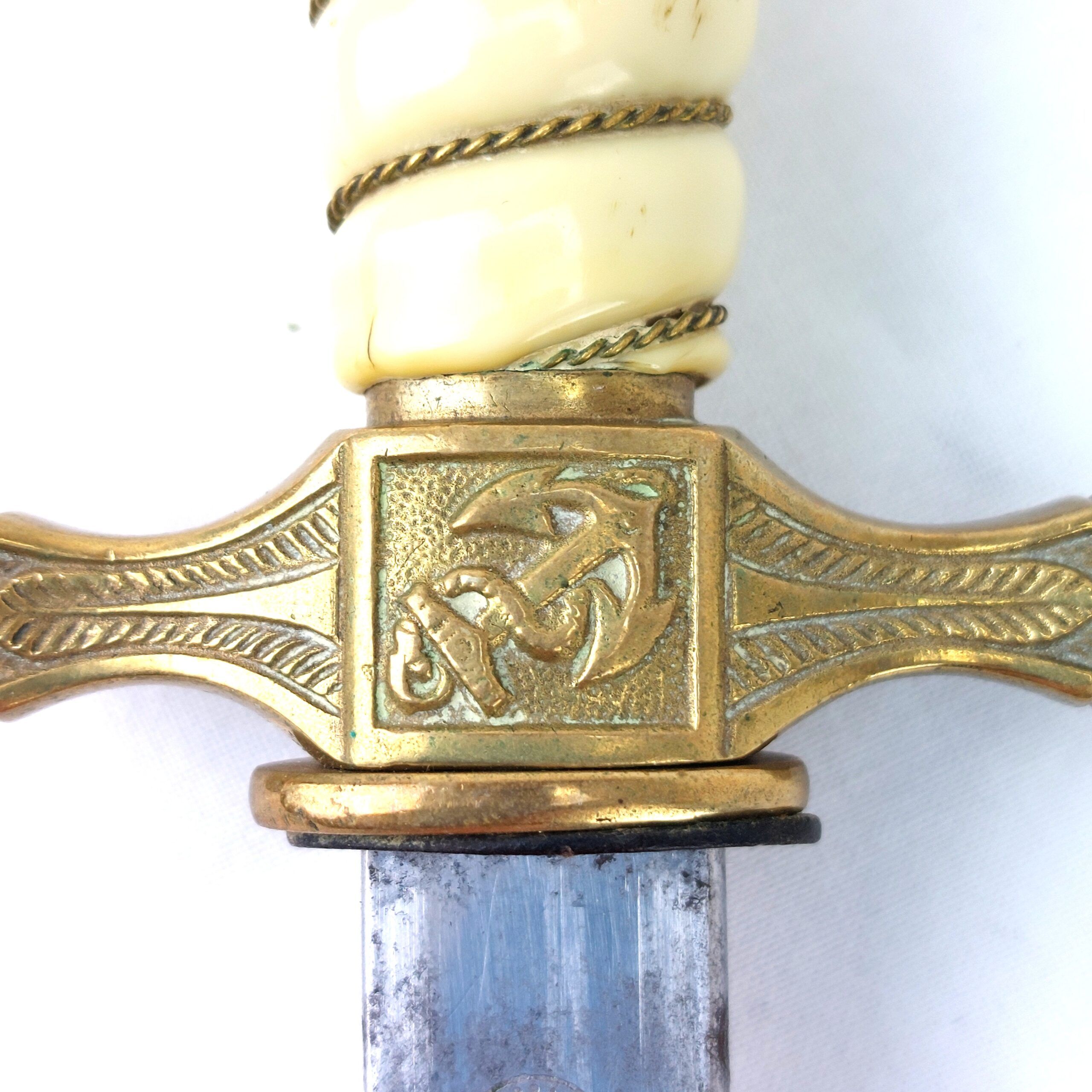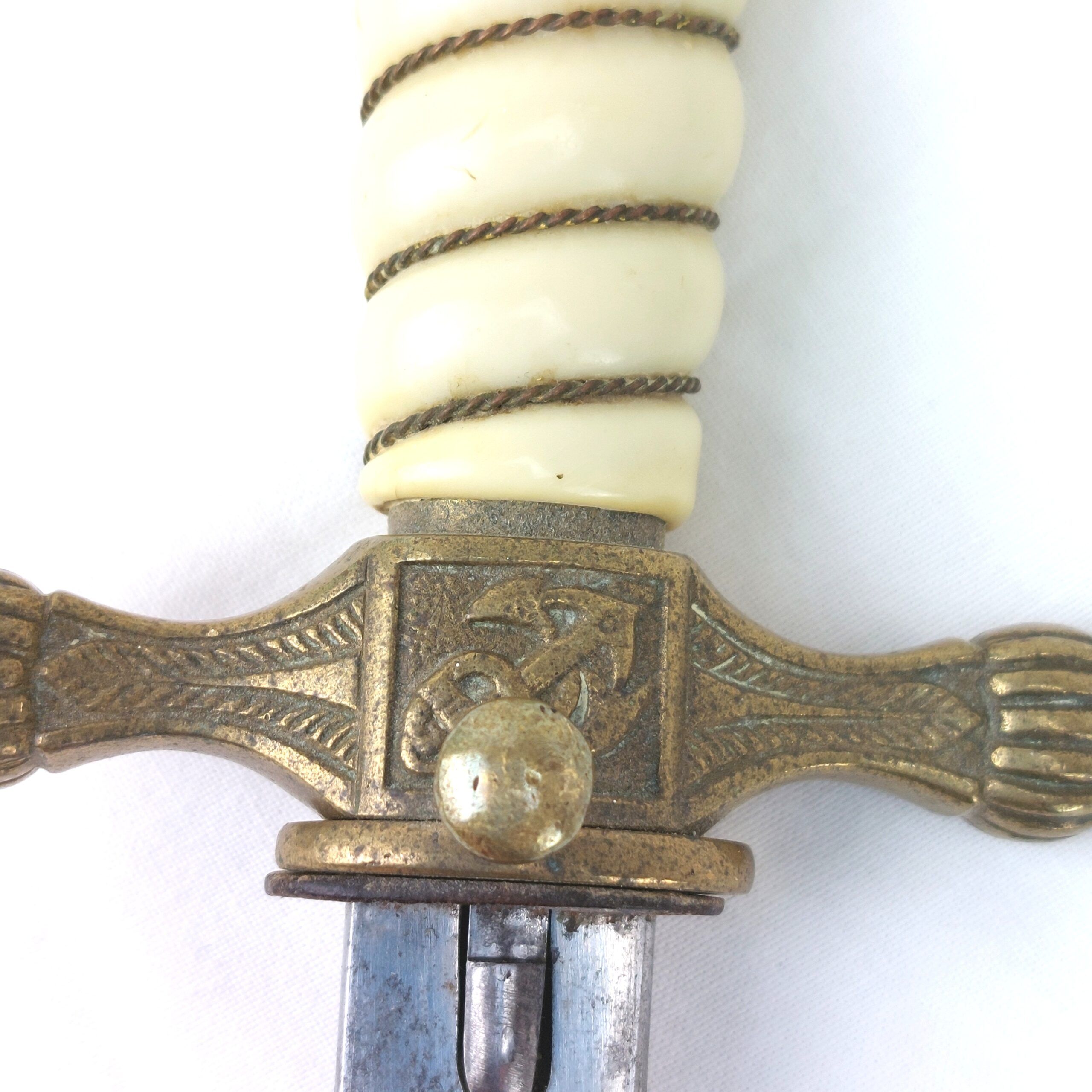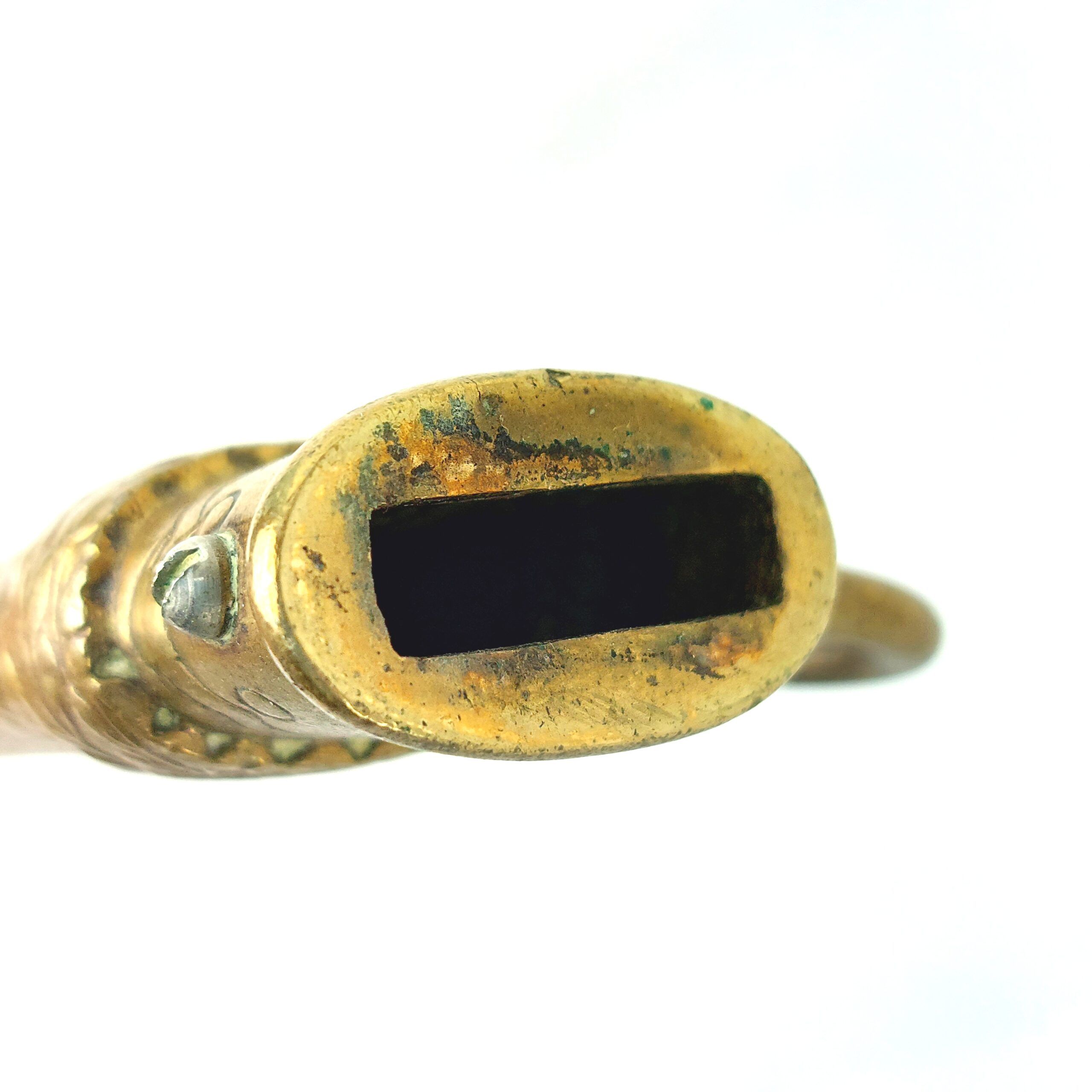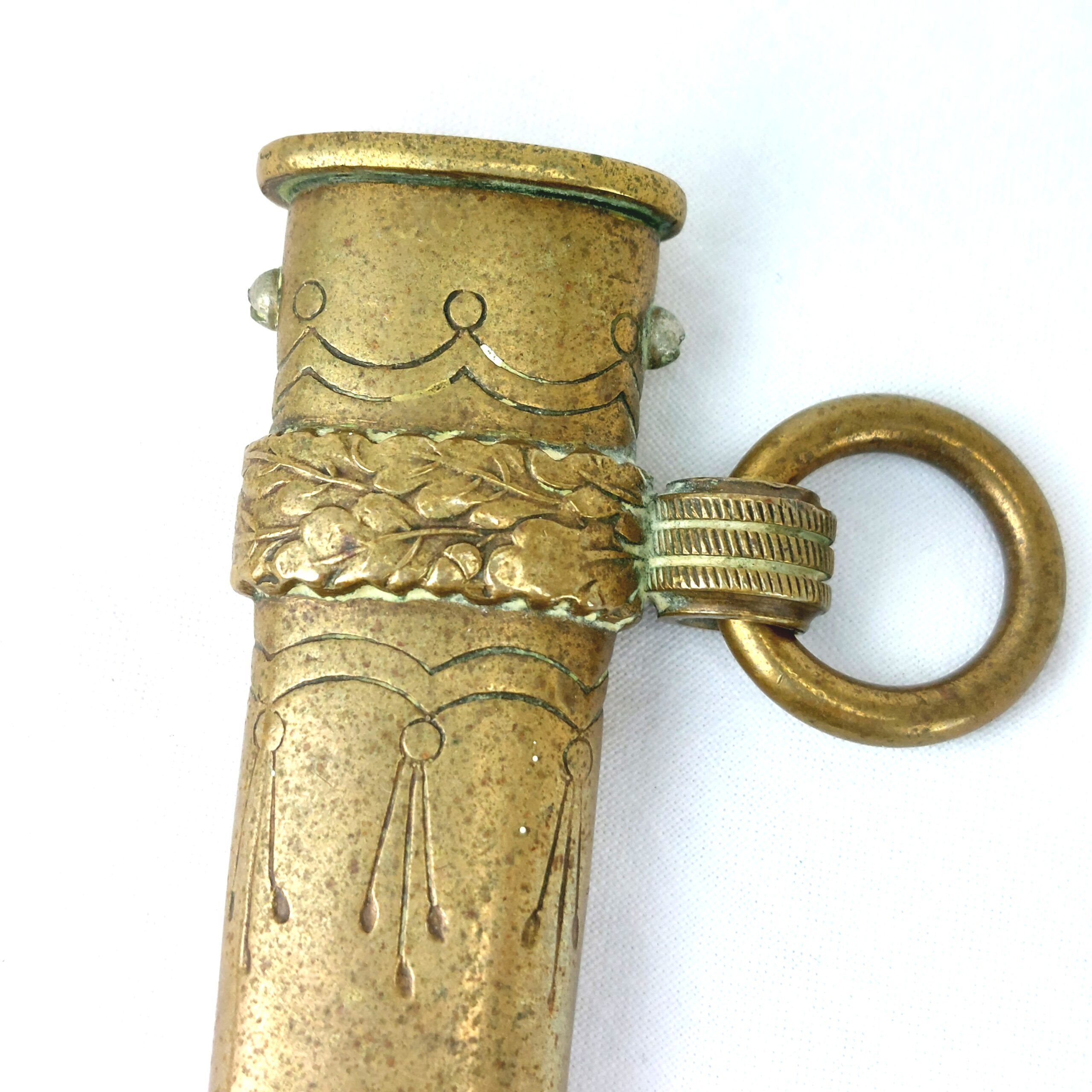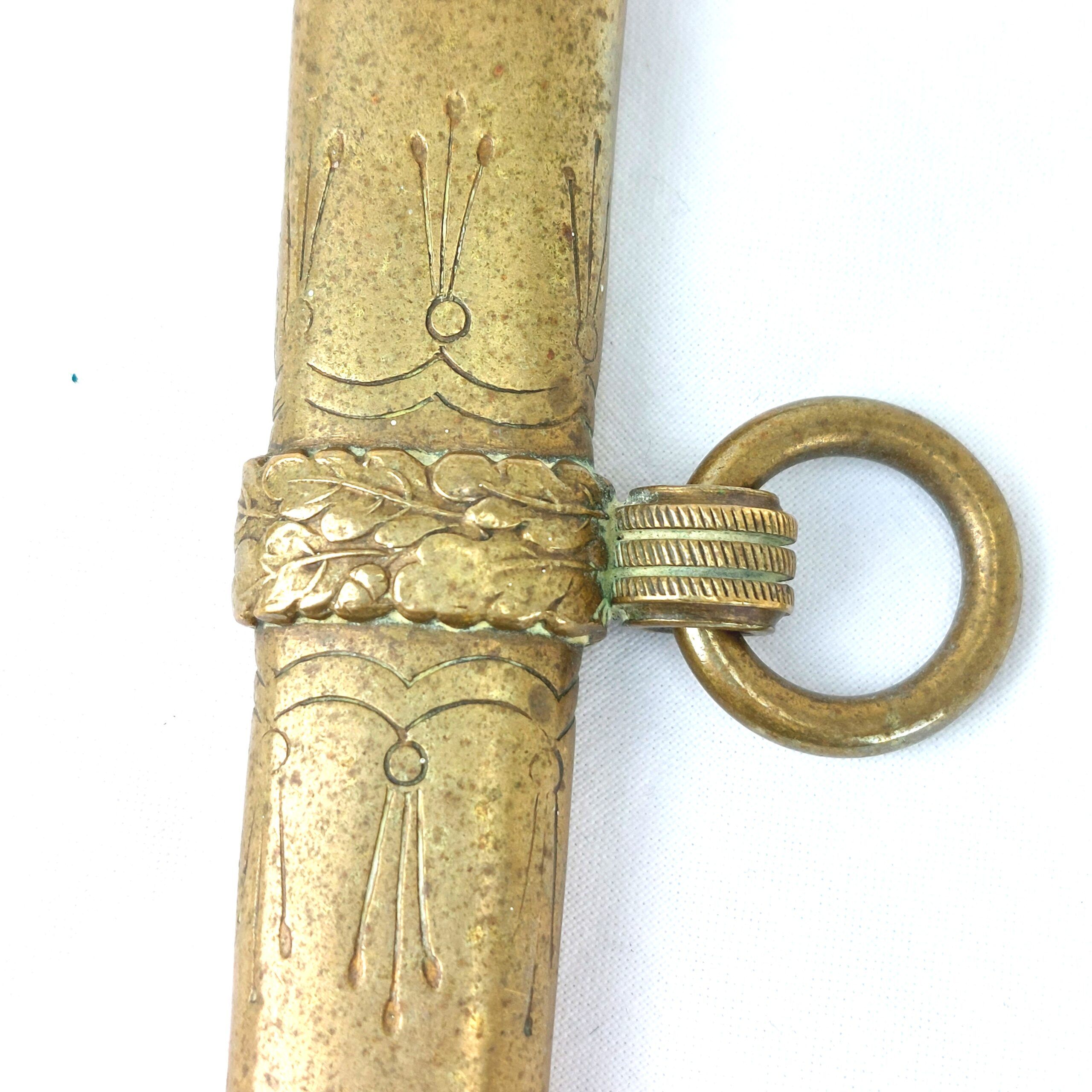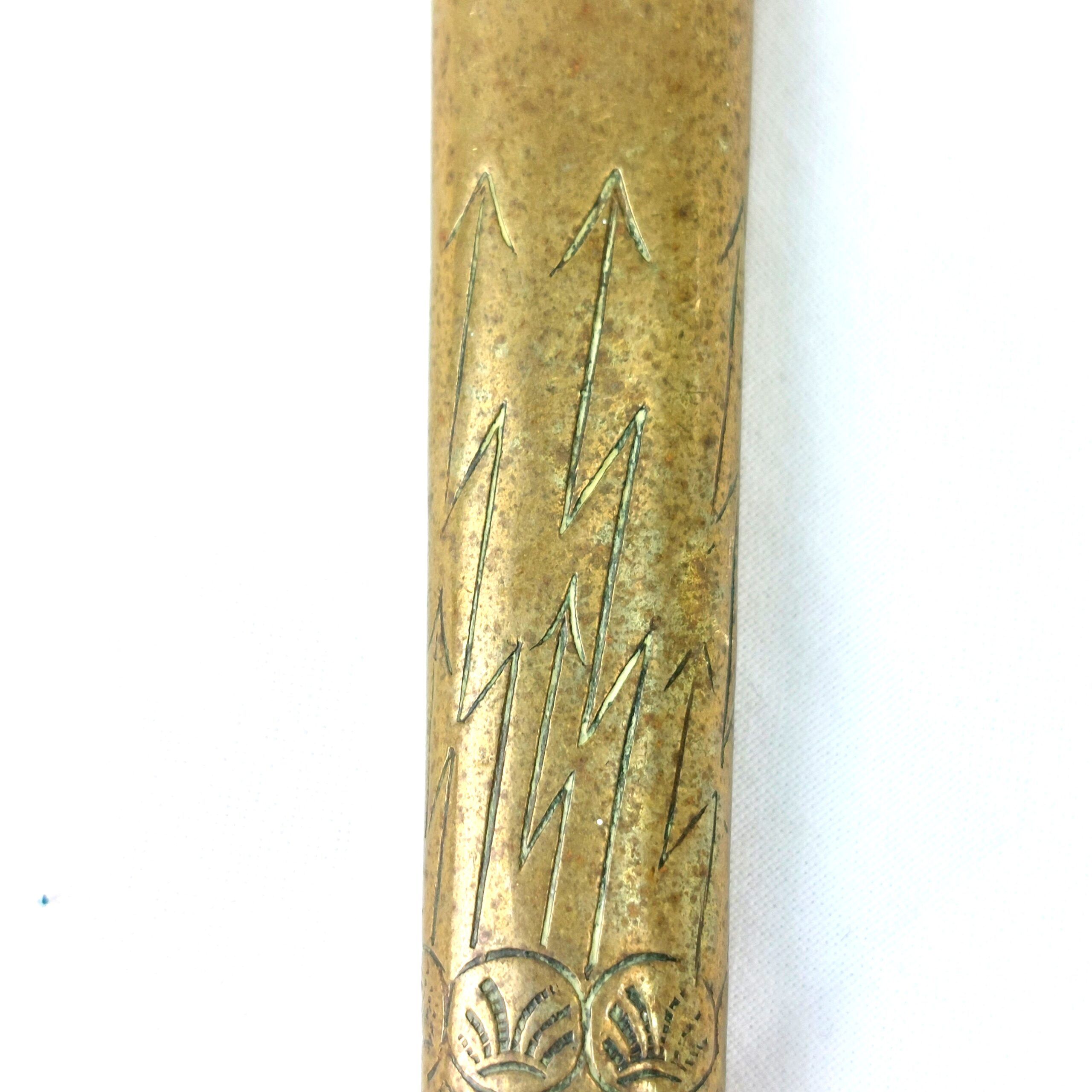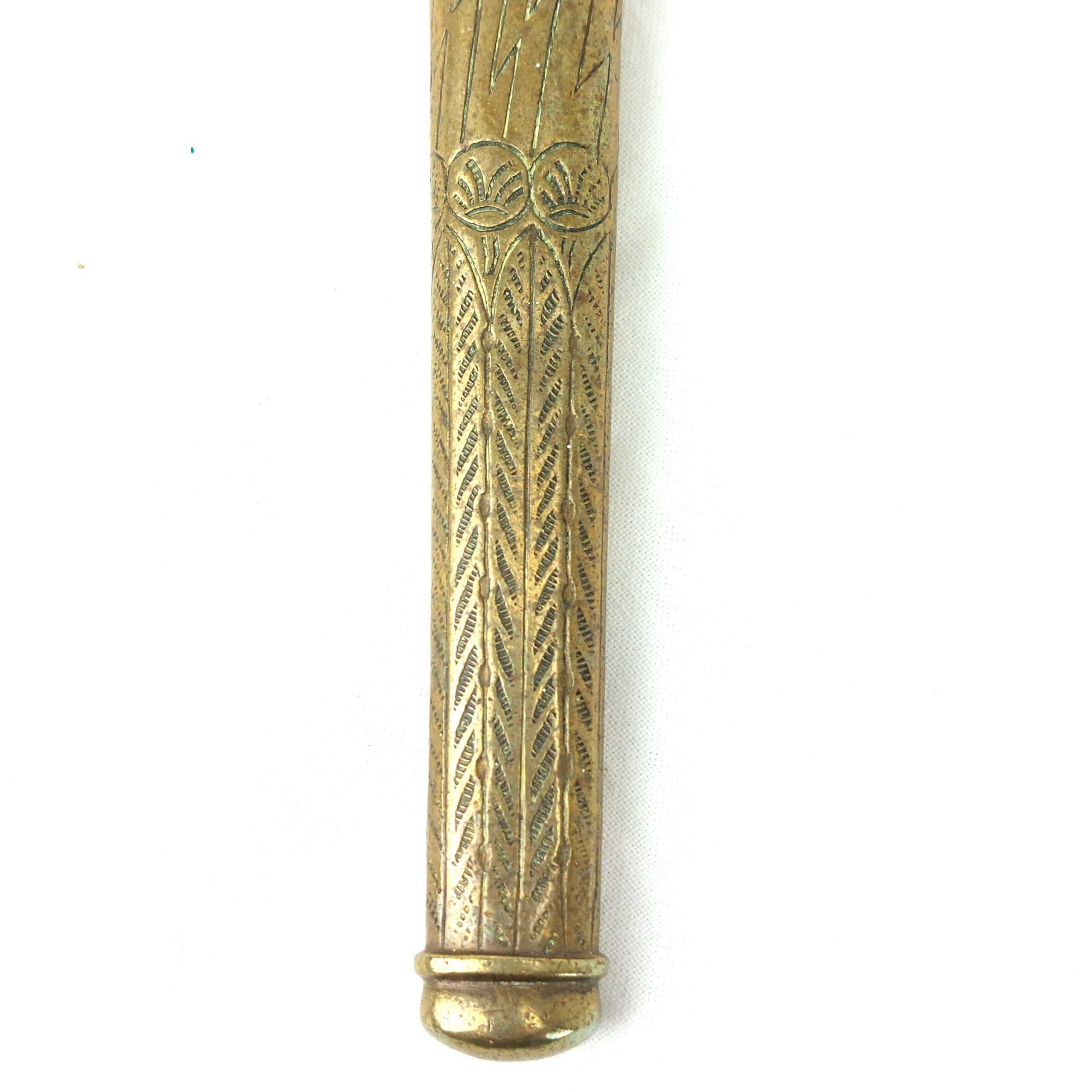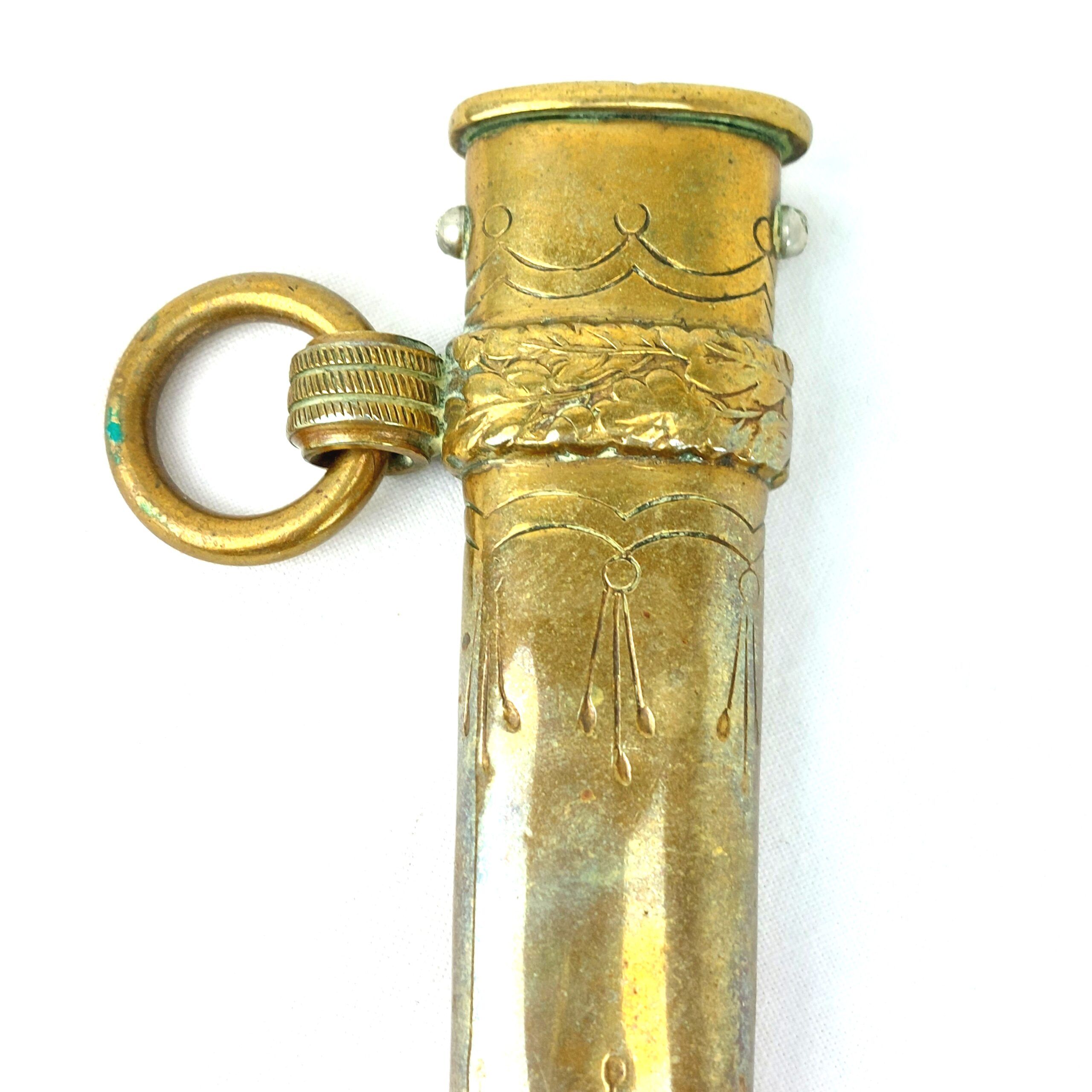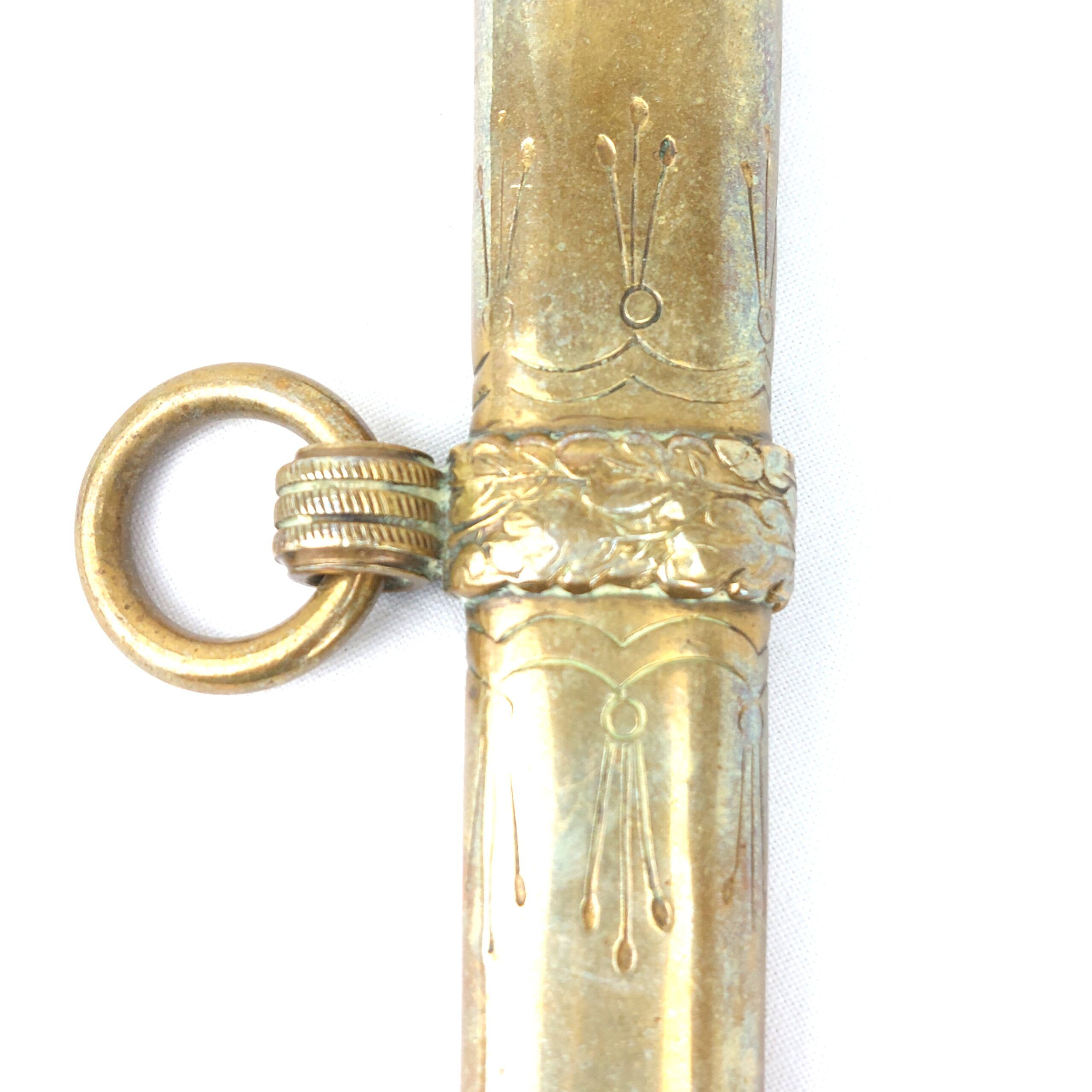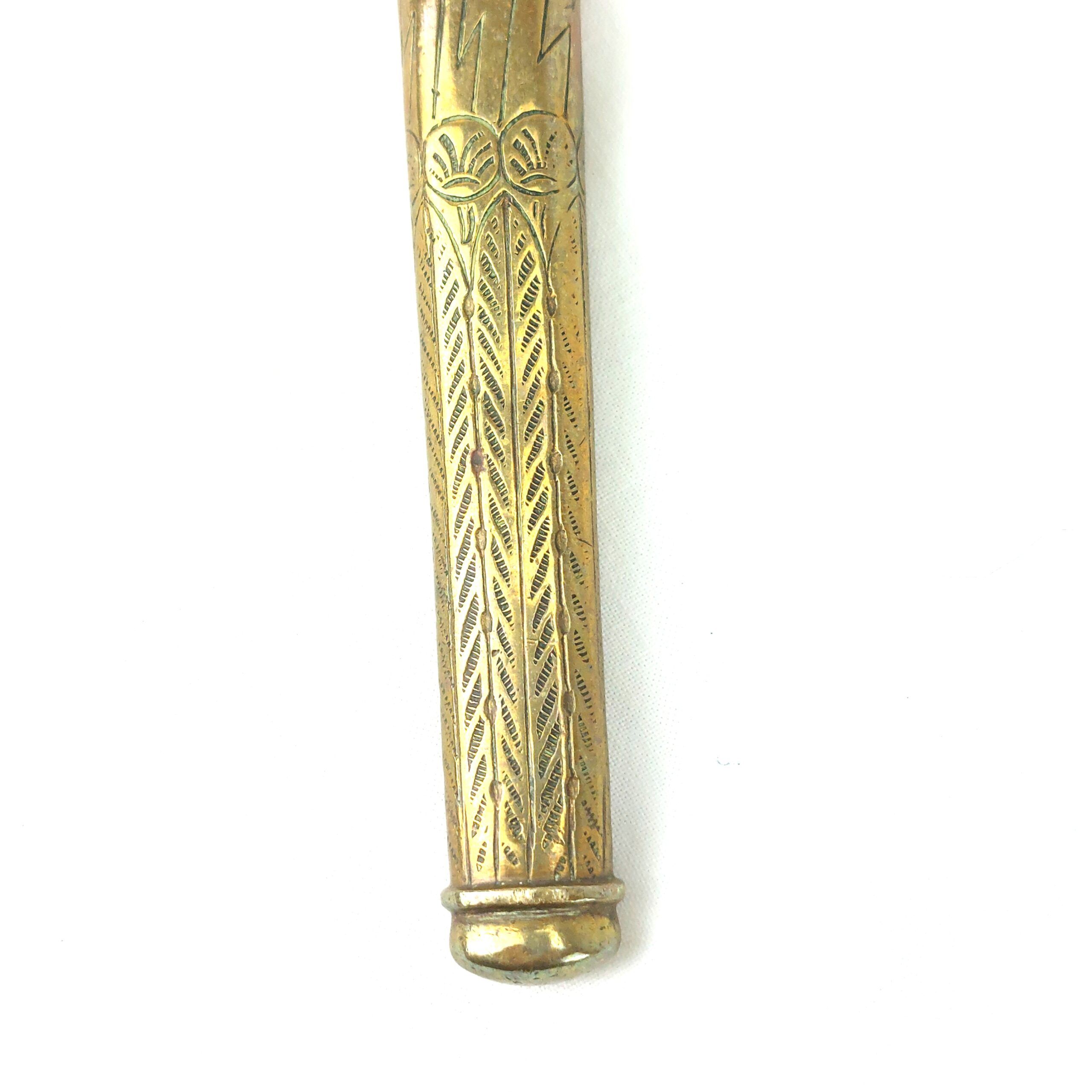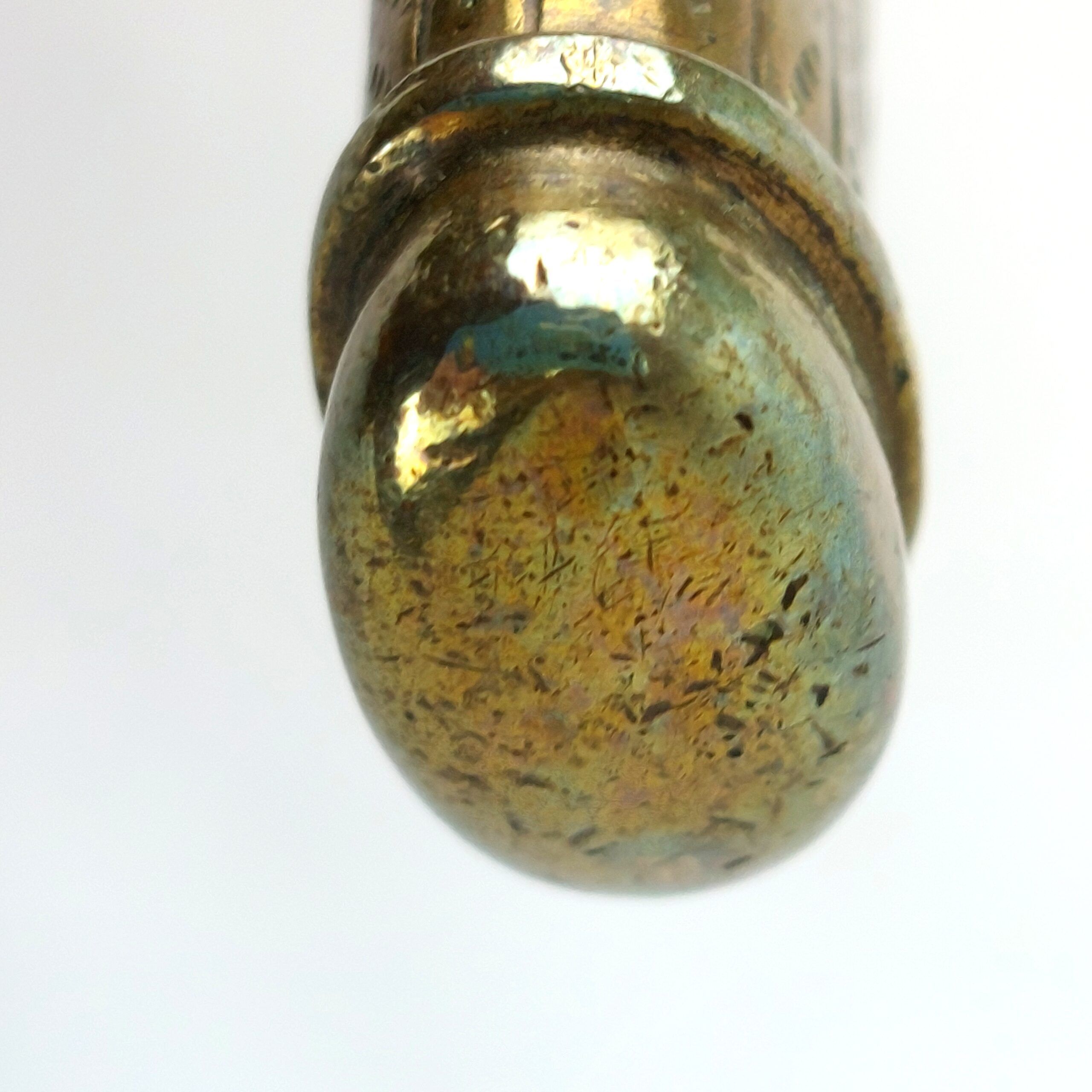*German, WW2, Kriegsmarine Dress Dagger & Scabbard, Made by E & F. Hörster, Solingen*
Approximate measurements: 37.8cm overall, 24.7cm blade
This fine dress dagger and scabbard were captured in WW2 by the vendors’ father – 1797999 Gunner Stanley Frederick George Porter, 13th HAC (Honourable Artillery Company) Field Regt RHA (Royal Horse Artillery), 11th Armoured Division.
Double-edged spear point blade with the E & F. Hörster Solingen maker’s mark on the ricasso. The blade is decorated on both sides with a furled anchor above foliage that ends in two open-mouthed fish. The cross guard features an anchor motif at its center with a press release button, and both arms are adorned with fine acanthus leaves and button-lined ends. The pommel is made of gilt brass, topped with an eagle holding a wreathed swastika. The grip is made of white celluloid with its original wire binding.
Housed in gilt metal lightning bolt scabbard with oak, leaf bands retaining two hanging rings.
1797999 – Gunner Stanley Frederick George Porter, HAC, 11th Armoured Division
Gunner Stanley Frederick George Porter enlisted 24th March 1941. He was released from service in 1946. The 13th (HAC) Regiment RHA equipped with Sexton self-propelled guns fought in Normandy, the Netherlands and across the Rhine into Germany as part of 11th Armoured Division.
The Honourable Artillery Company (HAC) is a reserve regiment of the British Army and holds the distinction of being the oldest regiment in the British Army, with its origins traced back to its incorporation by royal charter in 1537 by King Henry VIII. It is also considered the second-oldest military unit in the world. The term “artillery” in its name refers to a historical use of the word, which once meant any projectile weapon, such as arrows from a bow, rather than the modern connotation associated with cannons and heavy guns.
The 11th Armoured Division, was formed in March 1941 during the Second World War as a response to the success of German panzer divisions. It played a crucial role in several campaigns, including the Battle of Normandy following the D-Day landings in 1944, and continued to advance through France and into Germany, contributing to the Allied victory. The division was disbanded in January 1946, but was reactivated in 1950, and eventually restructured into the 4th Infantry Division in 1956.
E & F. Hörster, Solingen
Hörster’s origins date back to 1850 when it traded as “Friedrich Hörster,” later rebranded as “E. & F. Hörster” in 1870. The company registered in Solingen in 1872 and focused on producing swords, sabers, bayonets, and fencing foils. Under the ownership of Fritz Hörster and his daughters, the firm expanded until the early 20th century. By the Third Reich era, Hörster became a prominent supplier of edged weapons, assigned the RZM code M7/36 in 1935 and producing K98 bayonets marked “asw” and “sgx” by 1944. Post-WWII, Hörster continued manufacturing ceremonial swords and other items until it was declared insolvent in 1996.
*Condition*
This Kriegsmarine dagger is in very good condition. The blade is clean and the engraving clear. The grip is very good condition with a few tiny marks commensurate with age and service. The locking button works well. The scabbard fits securely and is in good condition with a few minor dents again commensurate with age and service. One side is dulled and the gilt has worn to brass, minor service wear. Please see photographs as part of the condition report.
RQMEEOXGEO_3257181312


